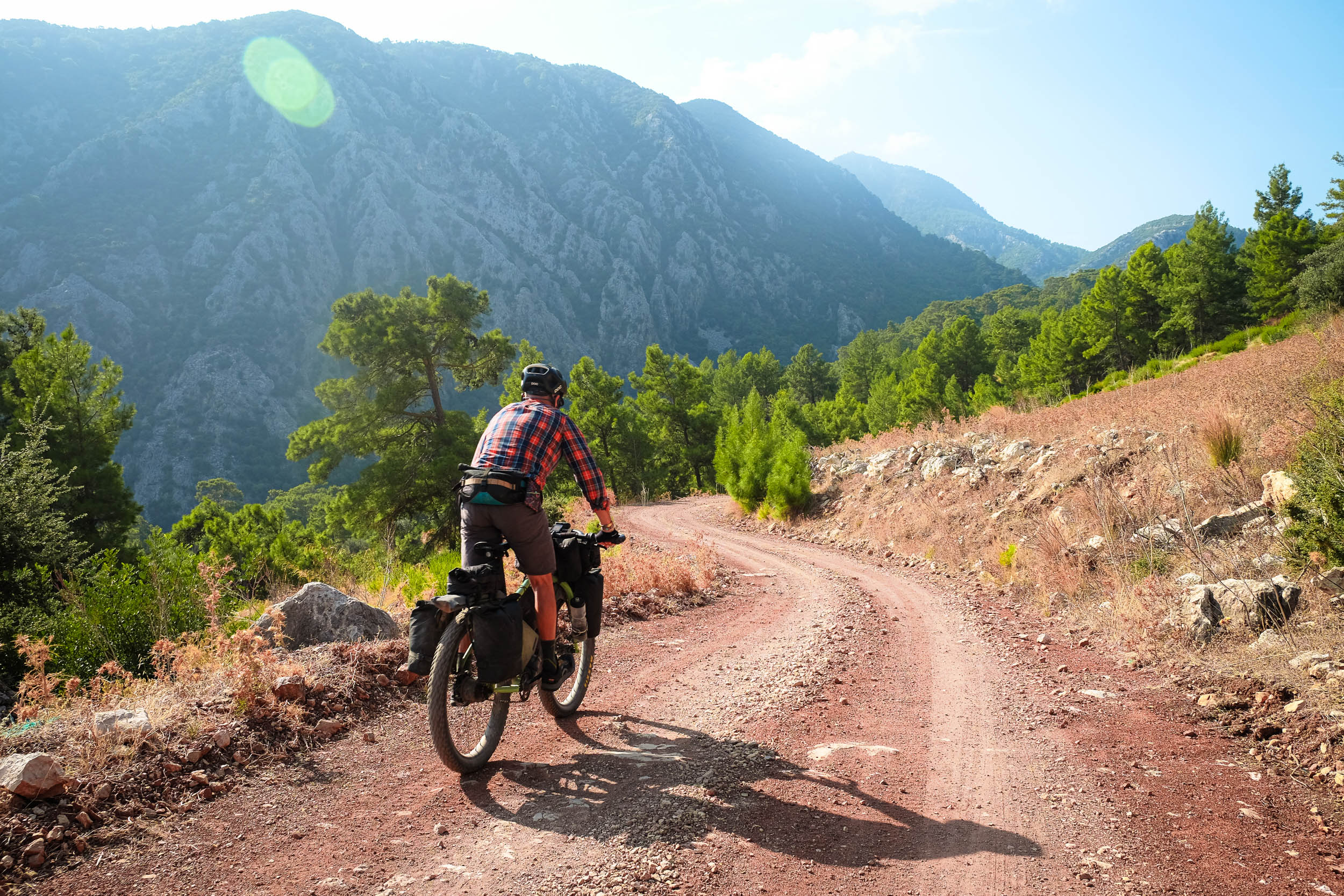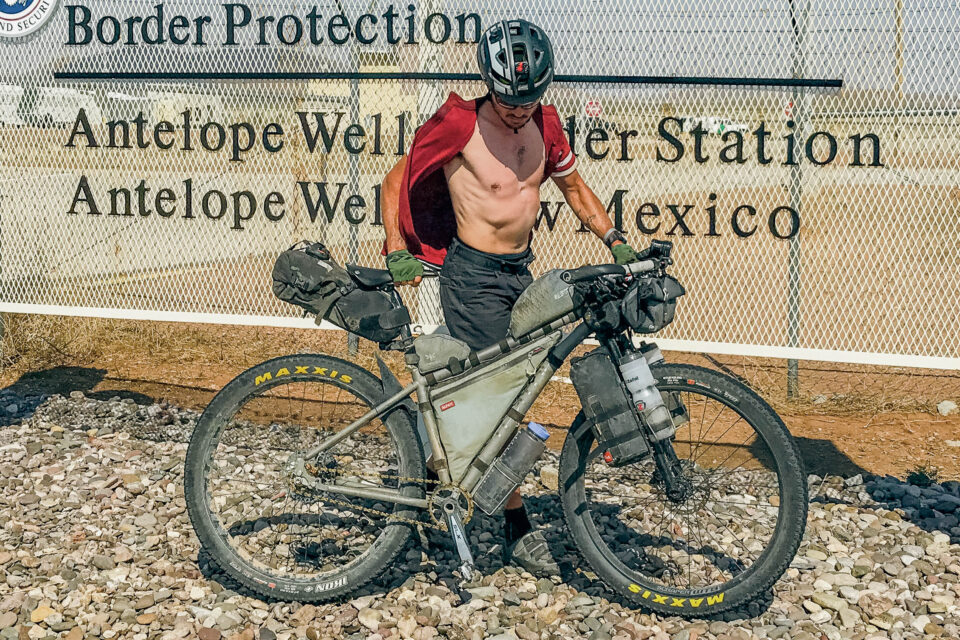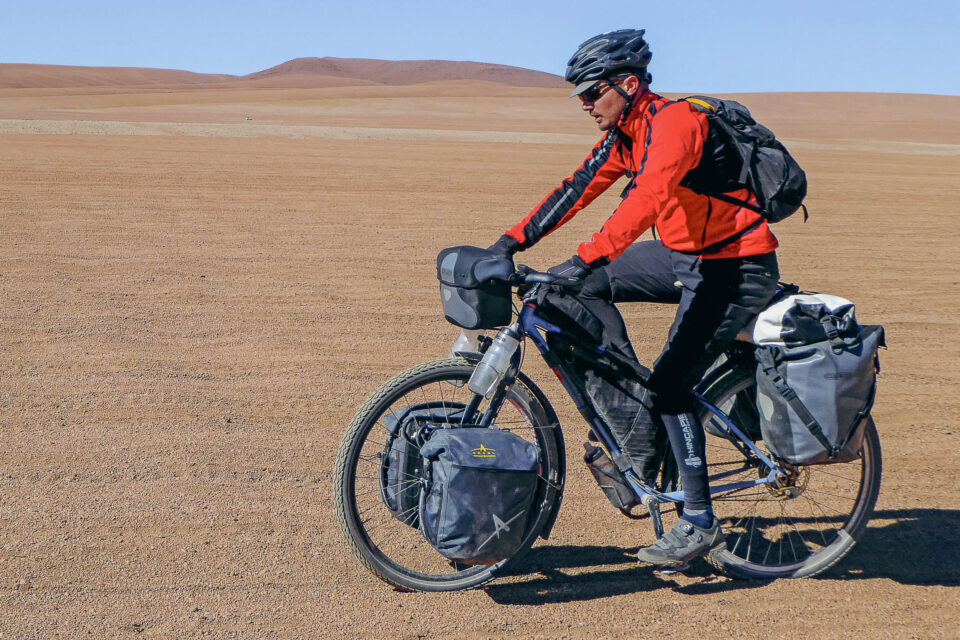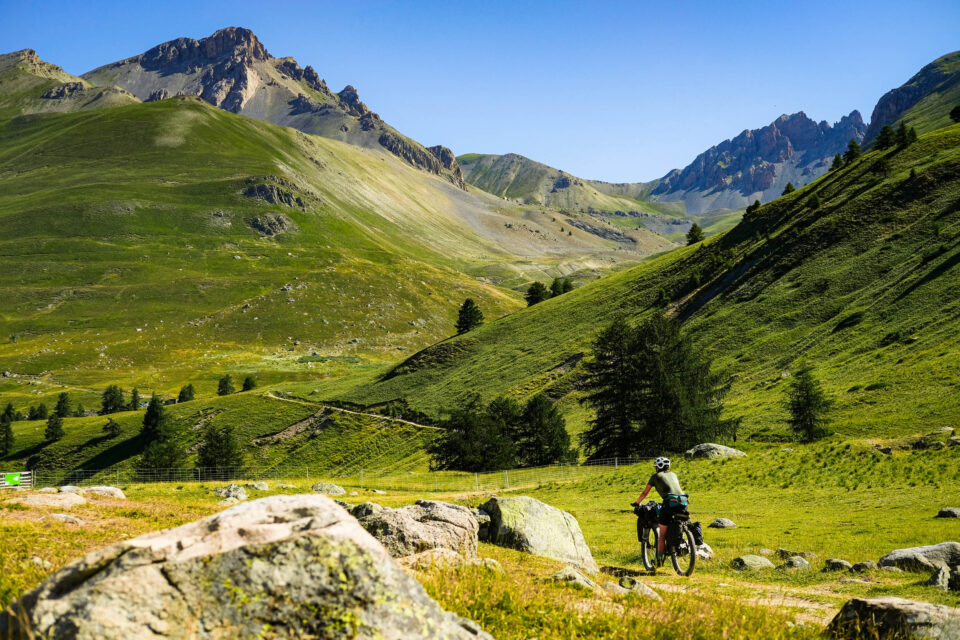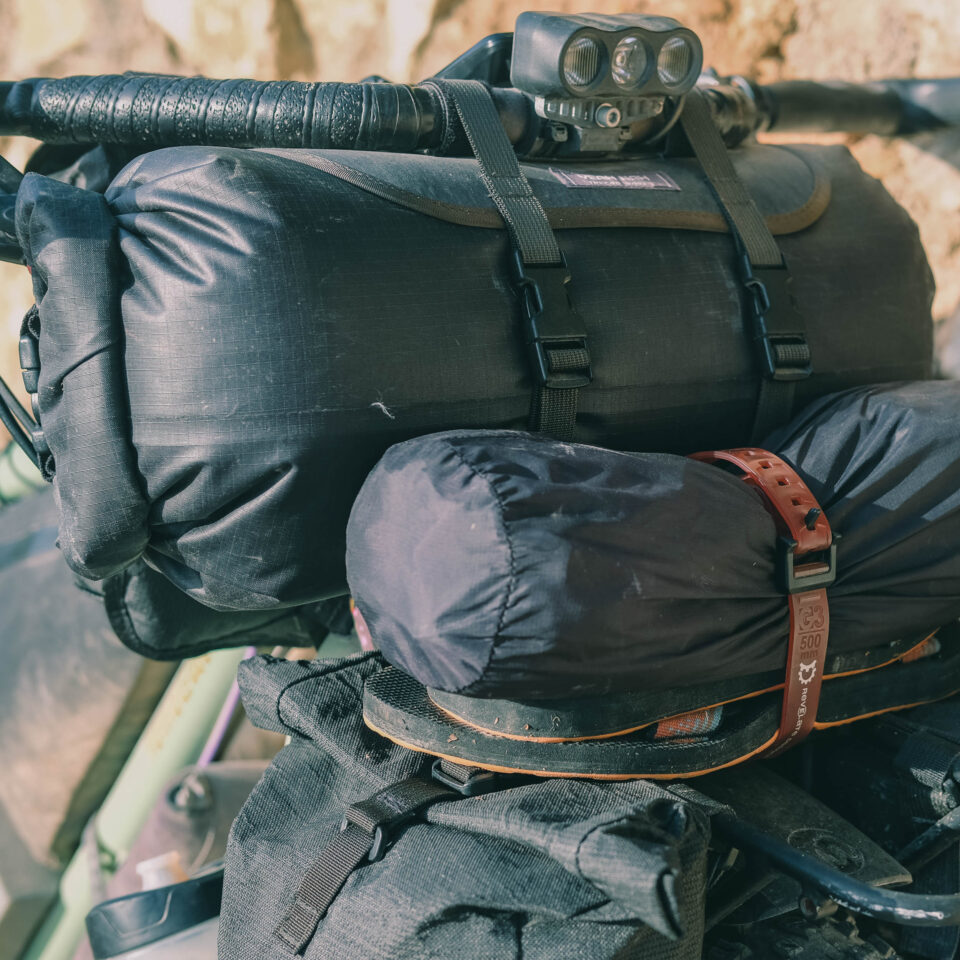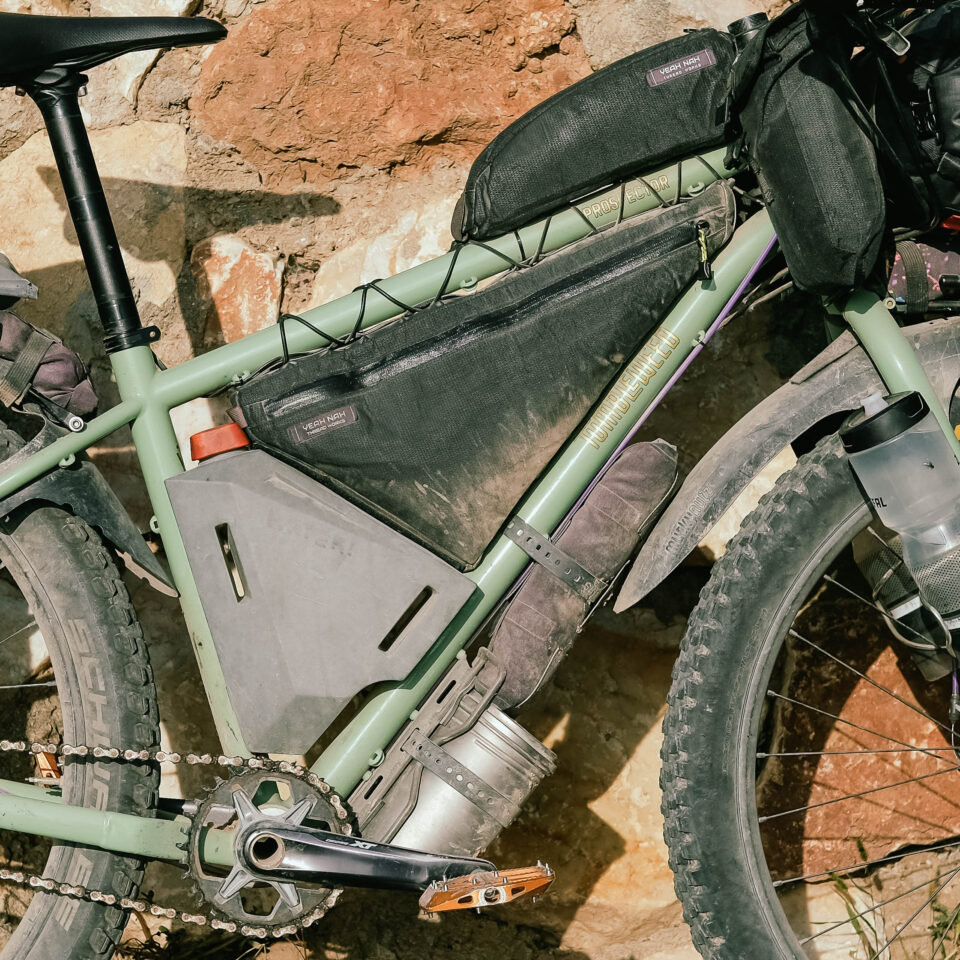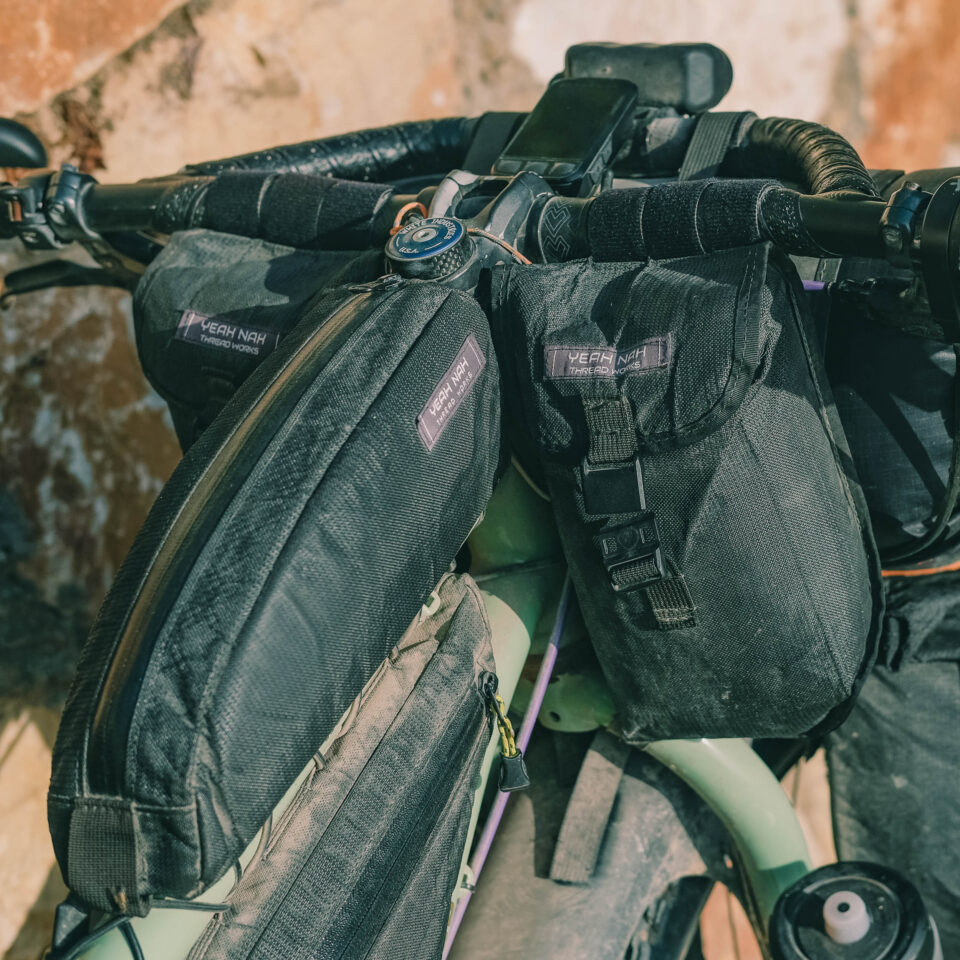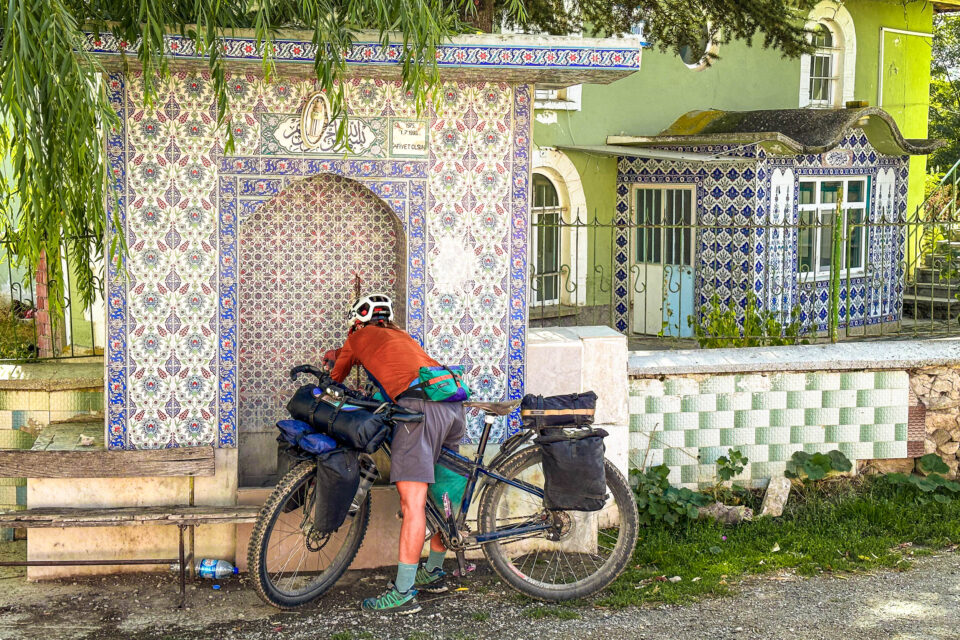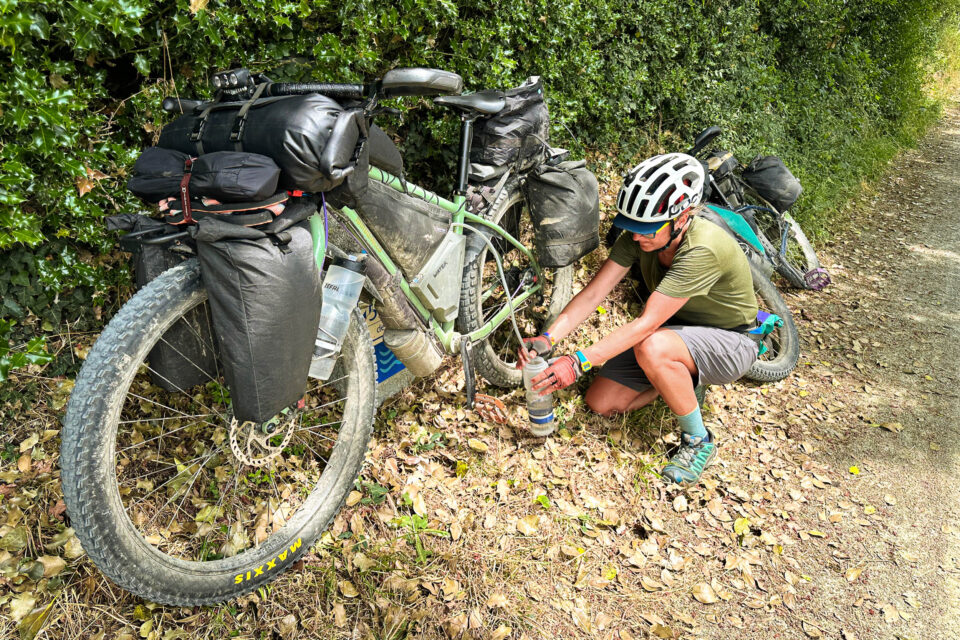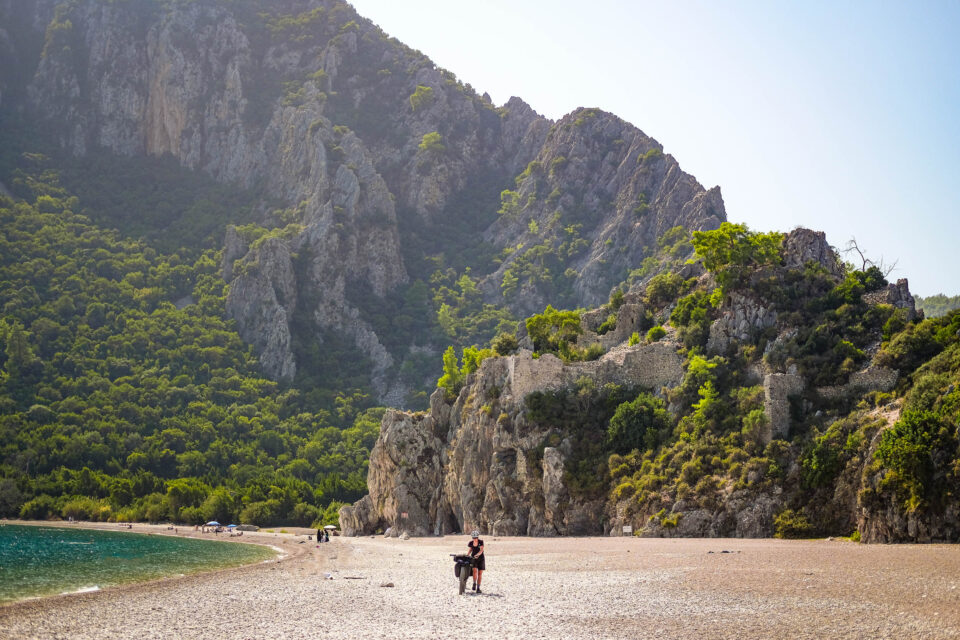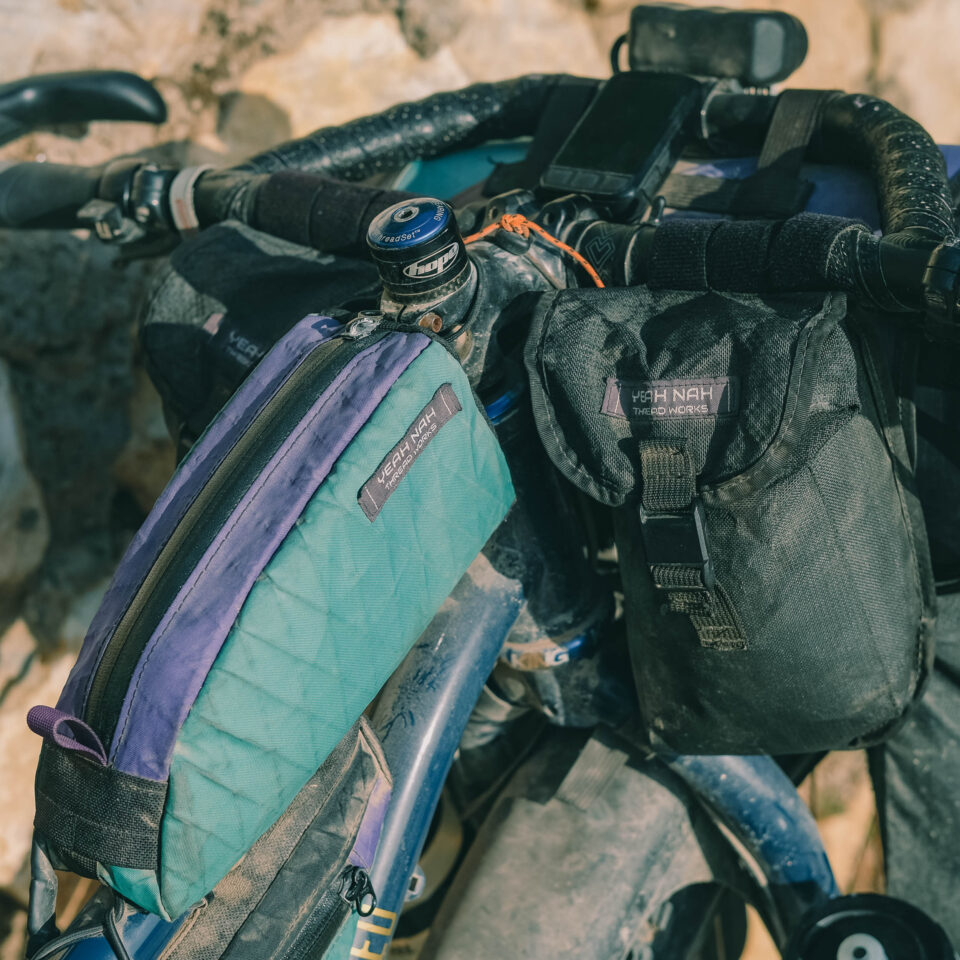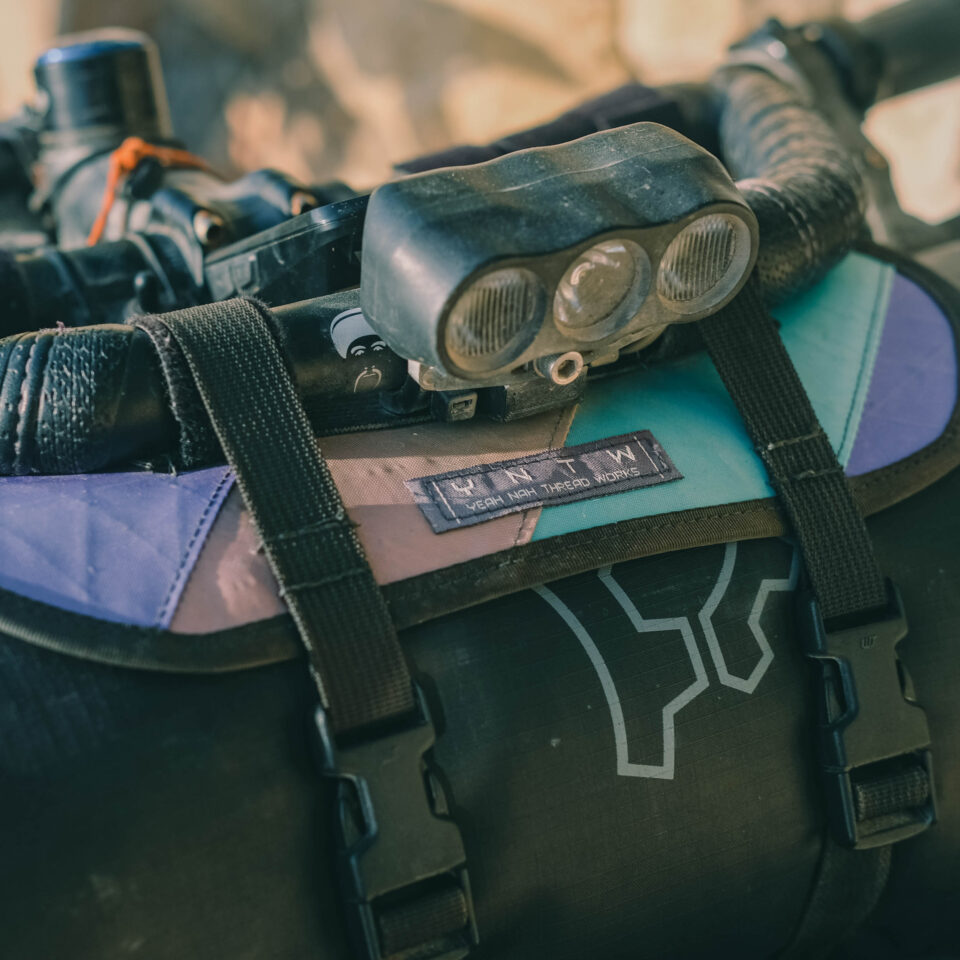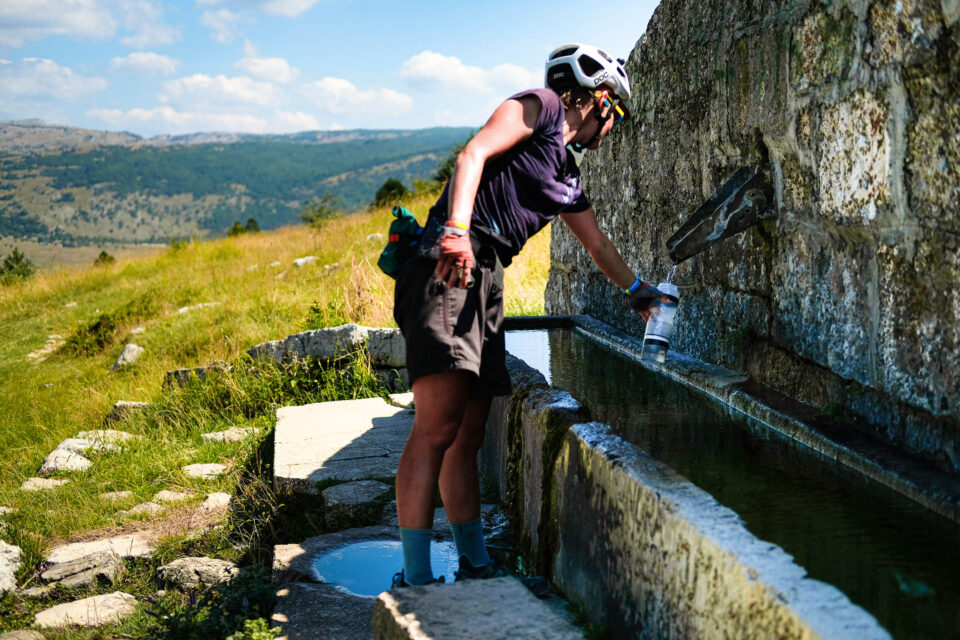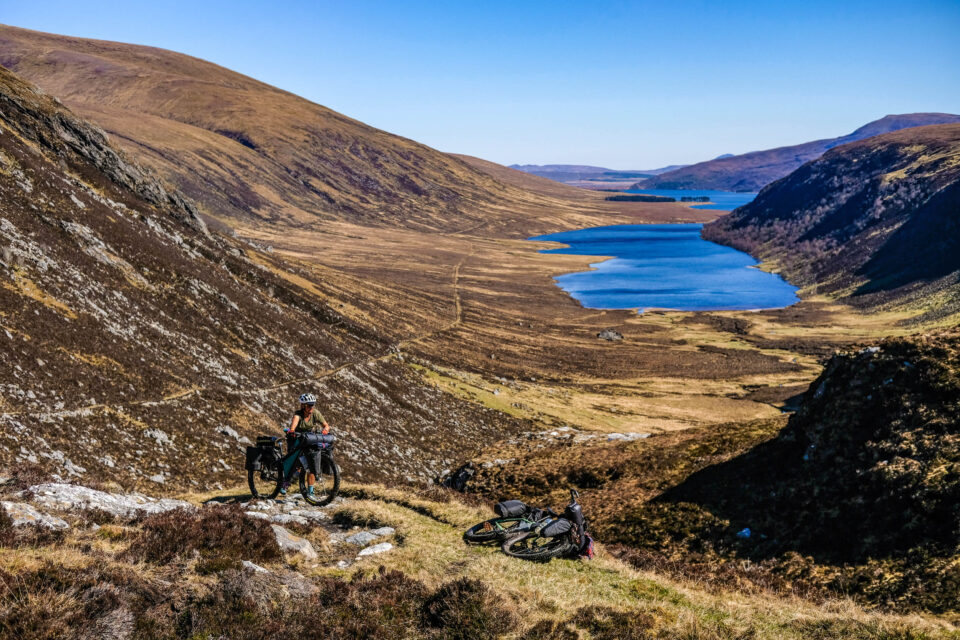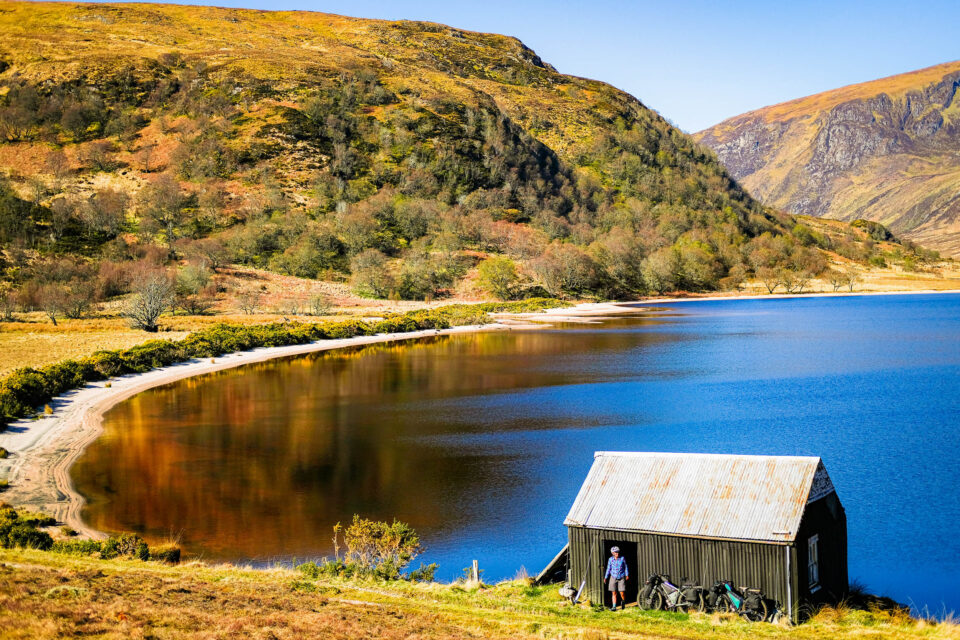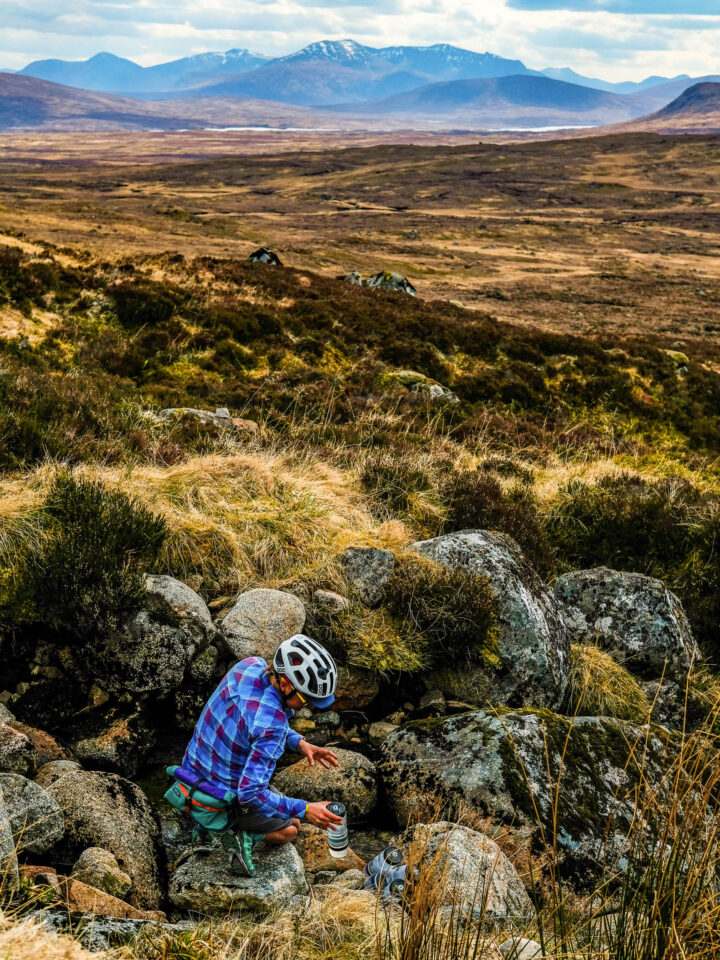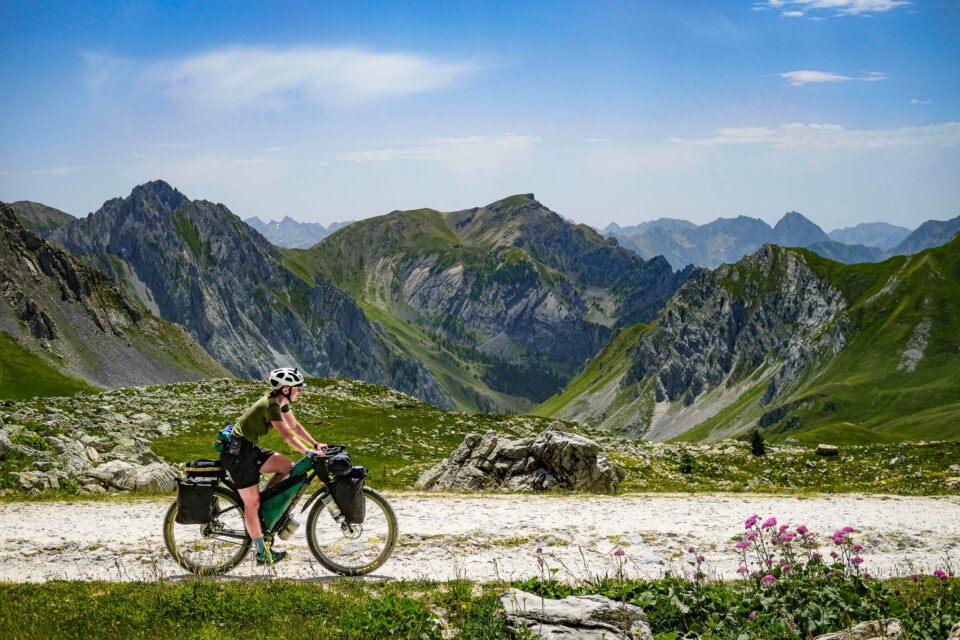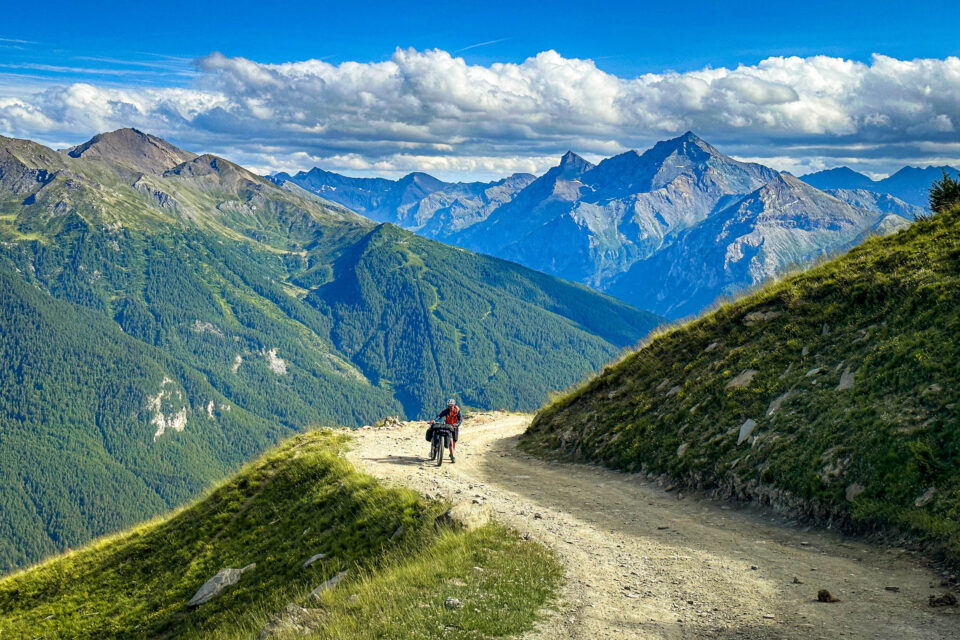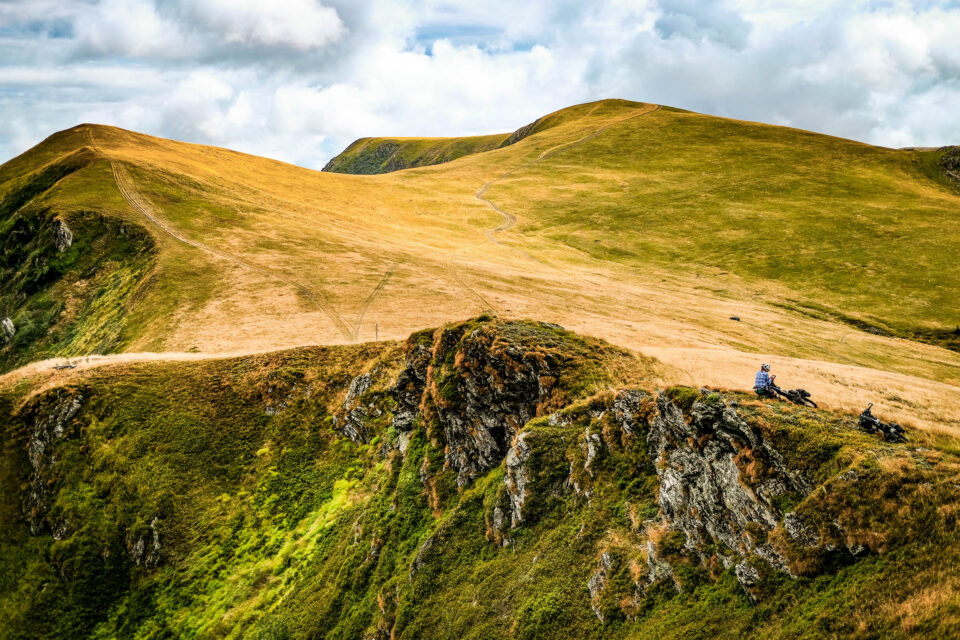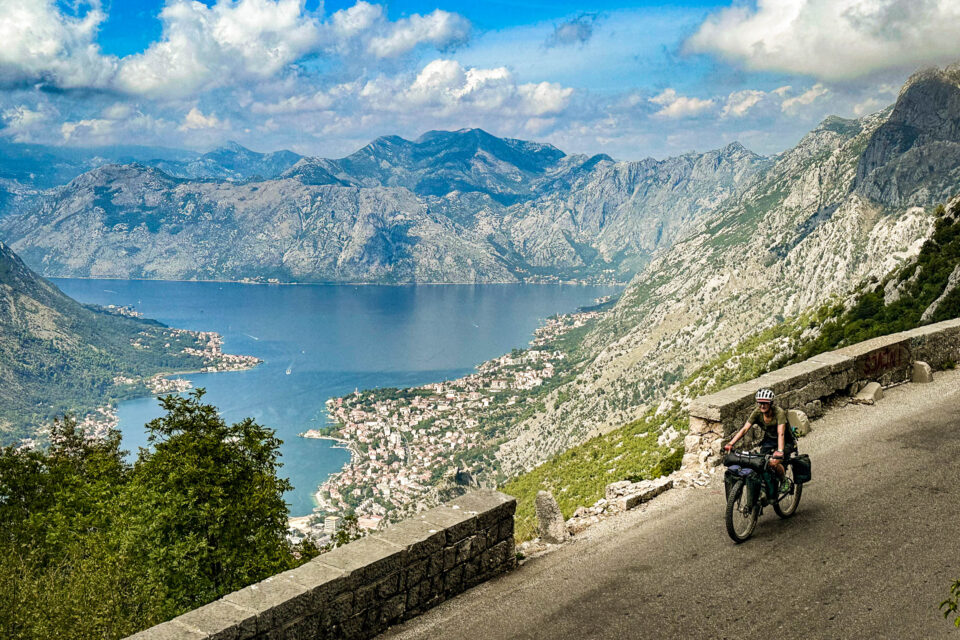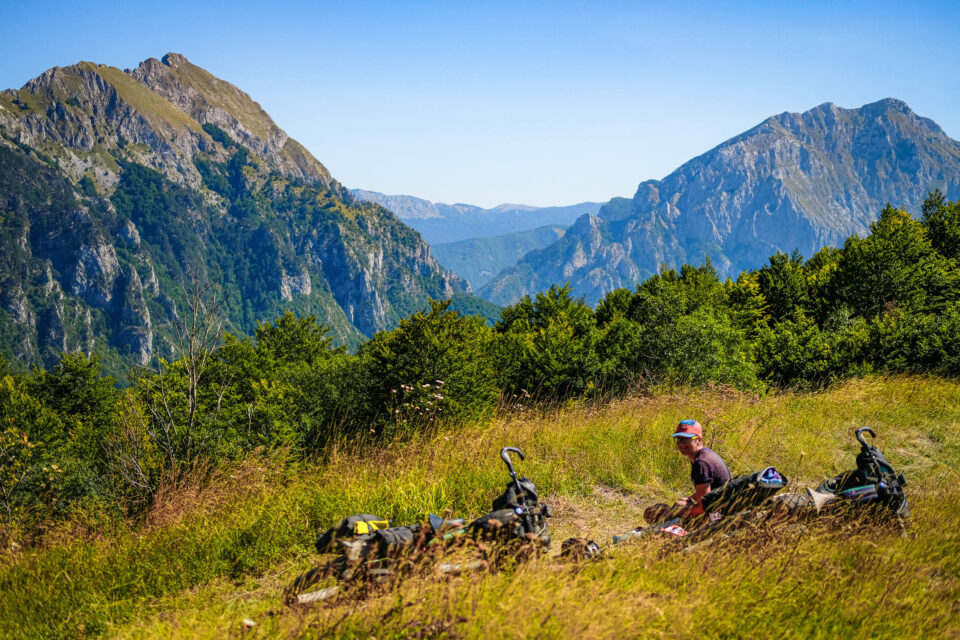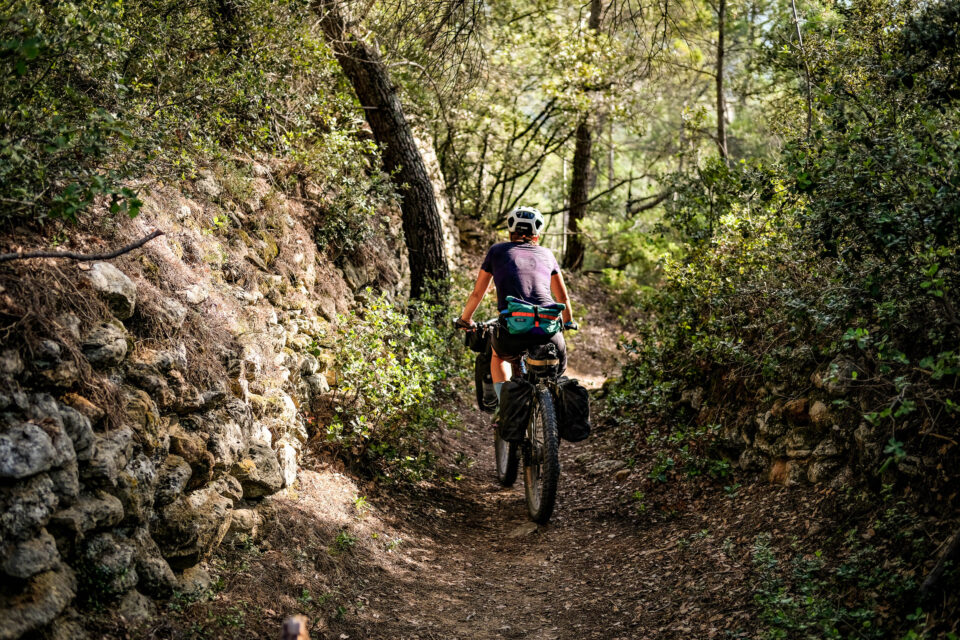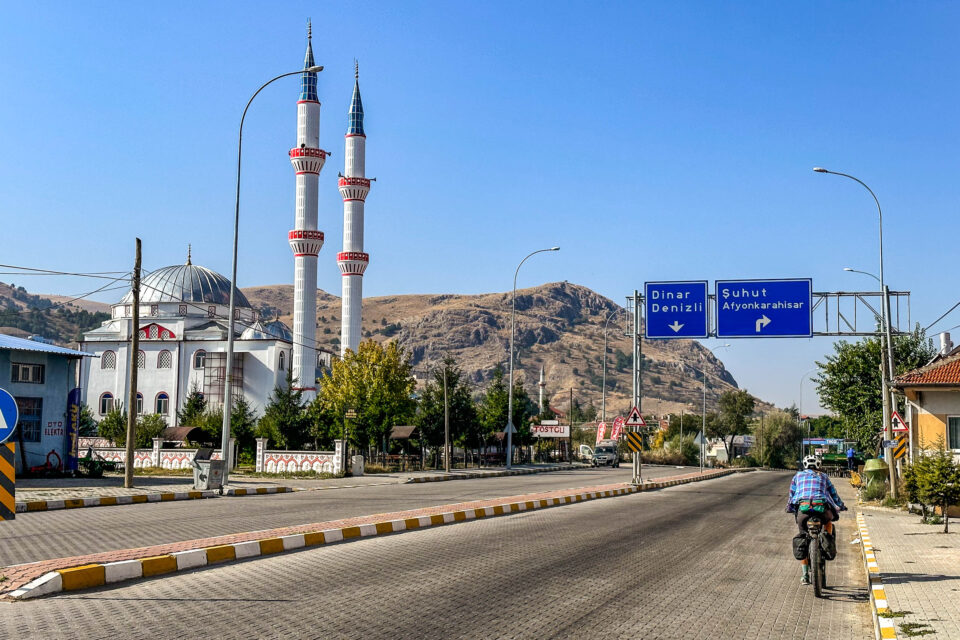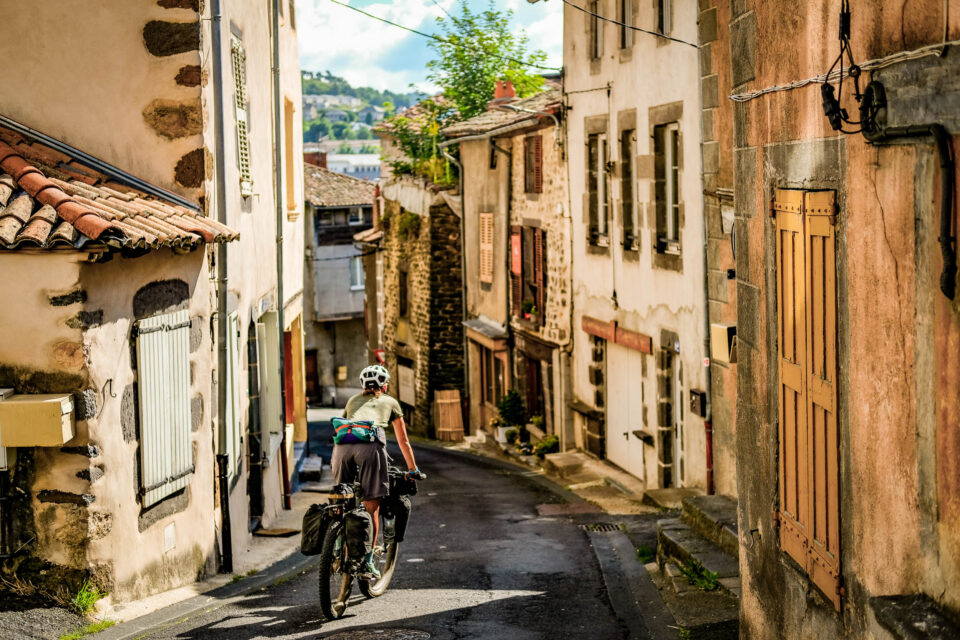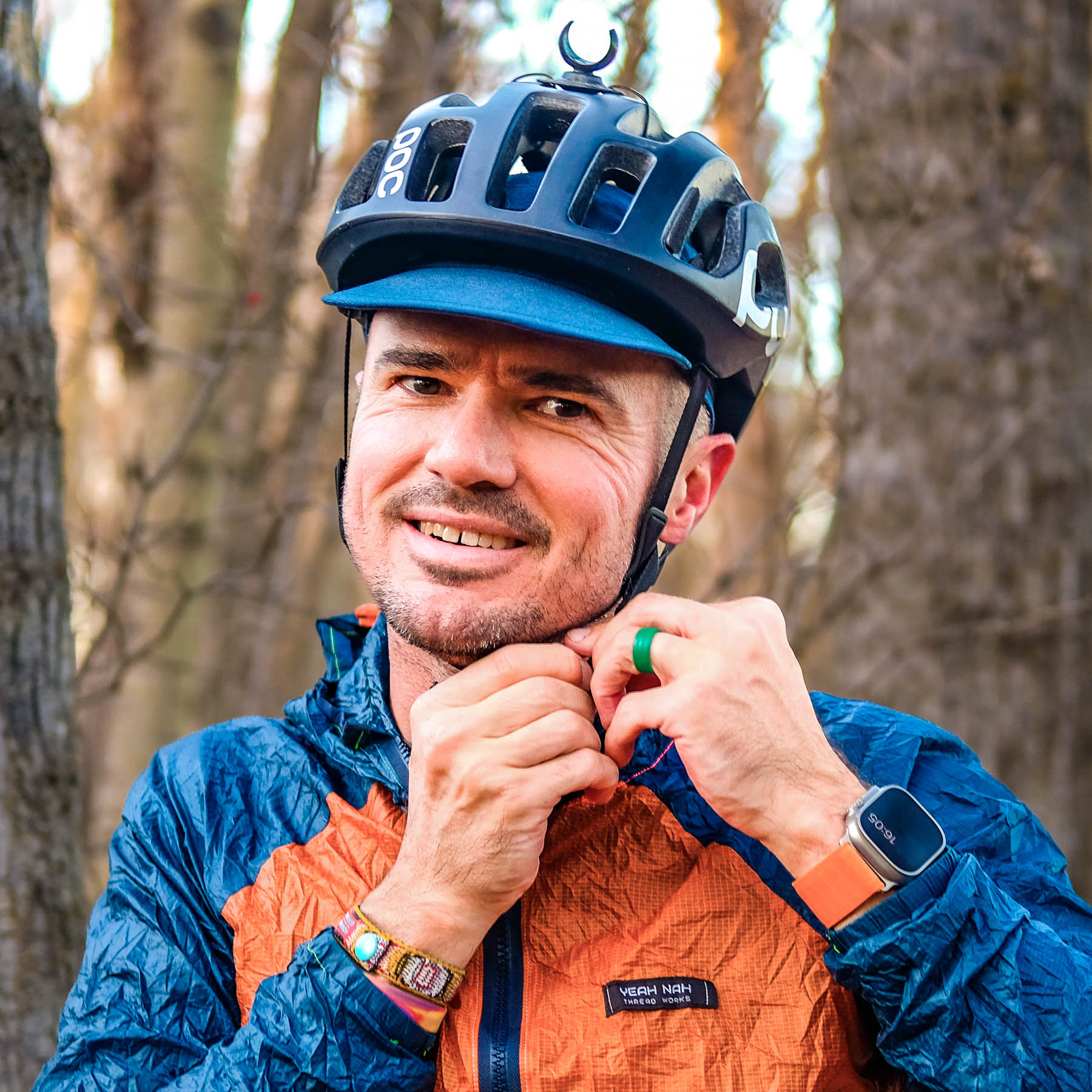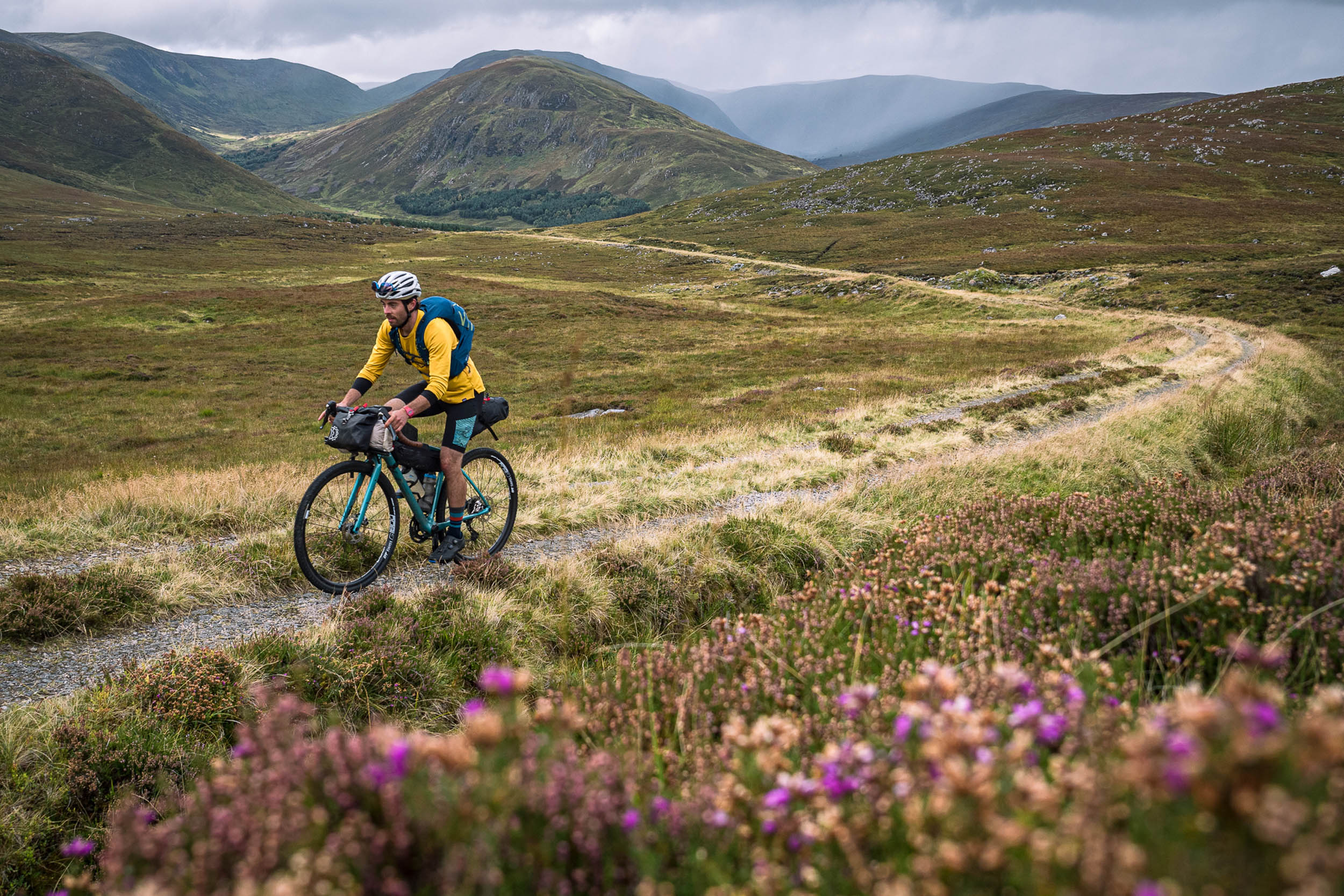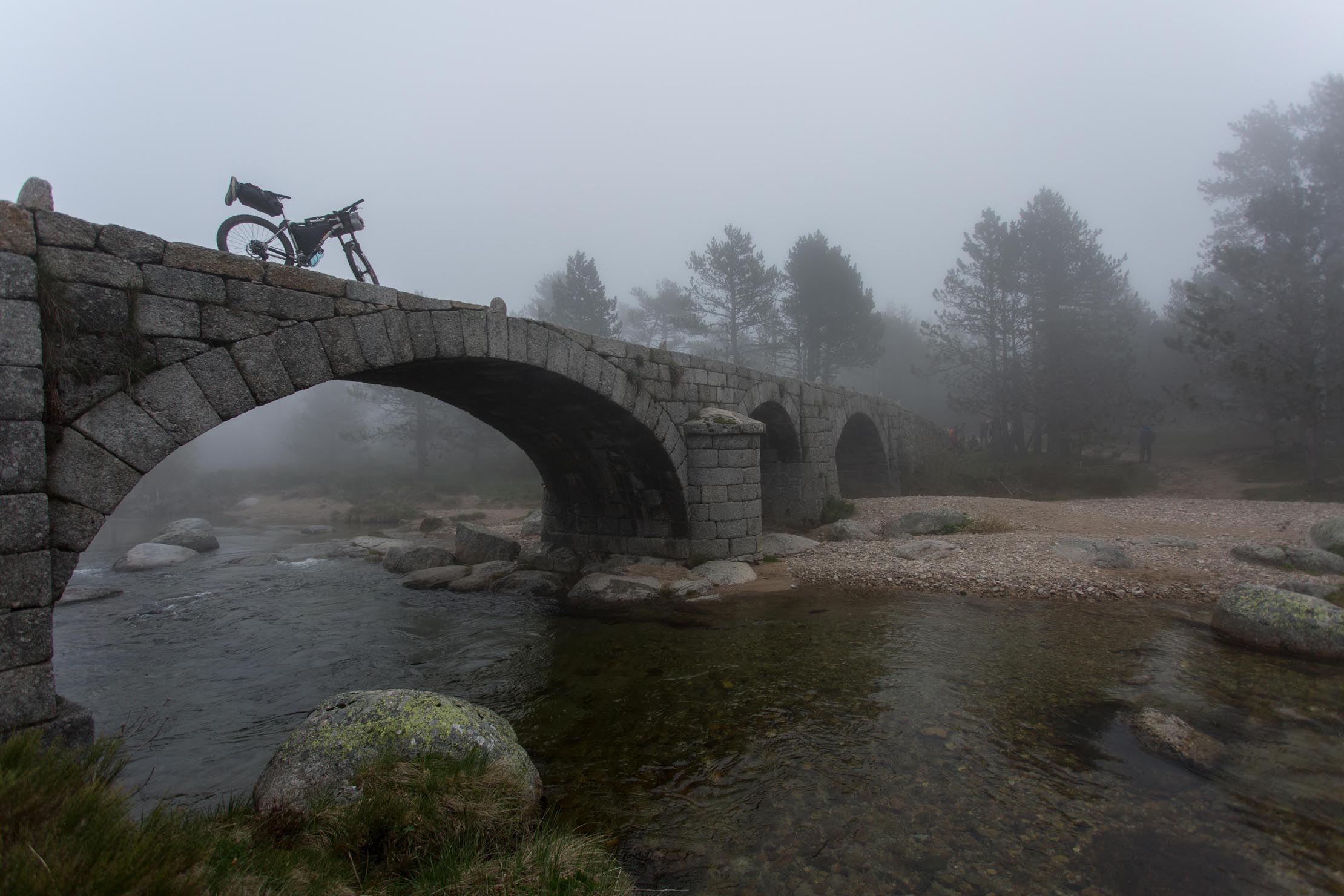Overlanding: What’s in a Name?
Share This
In this piece, Ty Domin makes the case for why he calls his style of riding “overlanding.” Following more than 40,000 kilometers of pedaling on many of our routes around the world, he also shares a look at his current Tumbleweed Prospector setup and offers some thoughts on how a shift in mindset has unlocked boundless possibilities. Find it all here…
Words by Ty Domin, photos by Ty Domin and Chelsea Rieger
Bikepackers out for a week-long trip politely say our bikes look a bit heavy, while long-term touring cyclists say we are travelling light. Having sat in both camps in the past—racing events such as the Tour Divide on a minimal singlespeed bikepacking setup and spending two years riding a full touring setup around the world—I get where they are both coming from.
I know that there’s no agreed-upon definition of bikepacking or touring (comment sections on the subject are a minefield at best), and I accept that we don’t need another term in our already full cycling lexicon. Creating a new marketing niche is certainly not in our interests, however, the bikes that took us 10,000 kilometres from Scotland to Türkiye didn’t neatly fit into the popular image of bikepacking or touring. They invited inquisitive looks from everyone until I described them as configured for “overlanding.” Then, as if by magic, people immediately got what we were doing and why our bikes were simultaneously heavy and light.
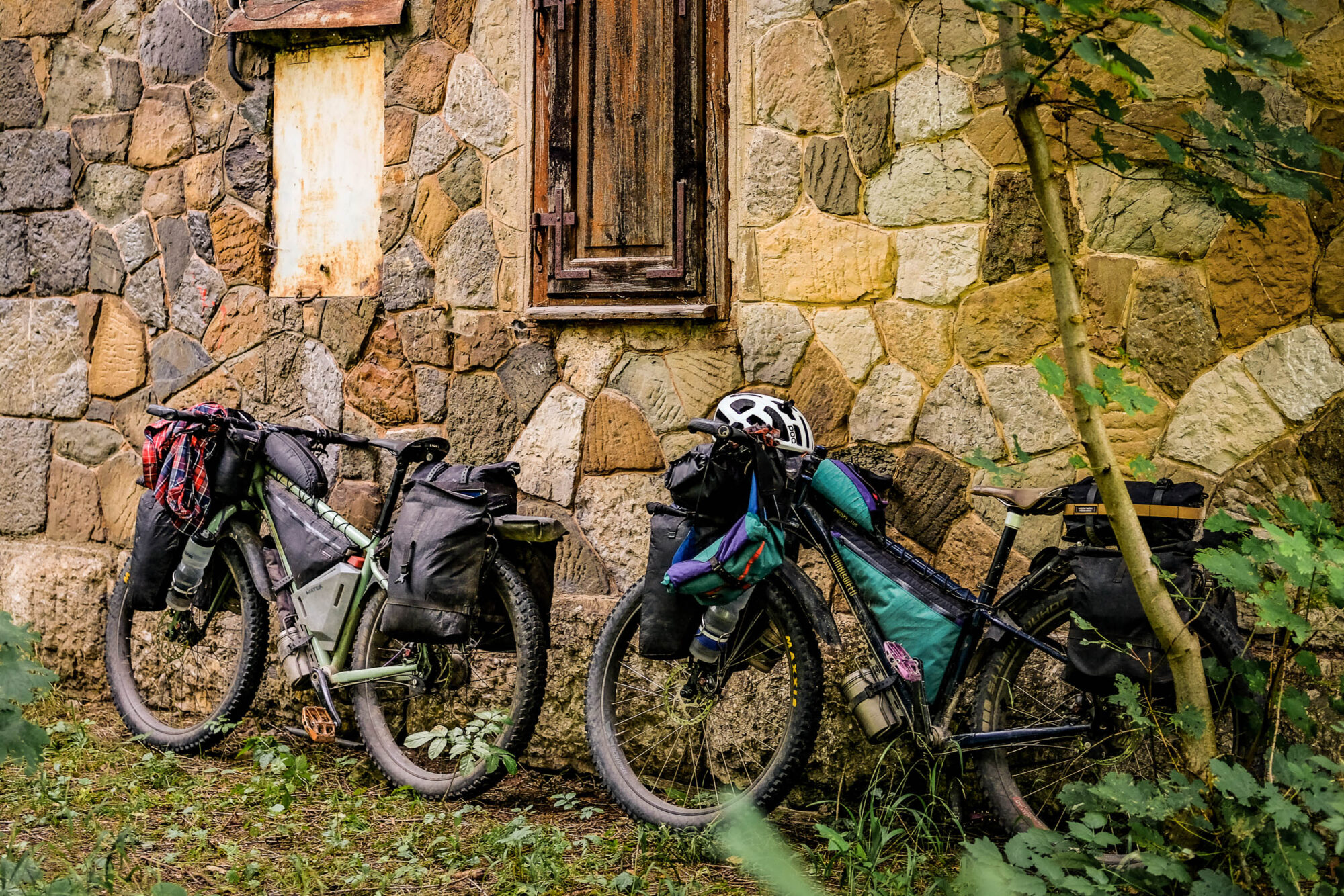
This got me thinking about what makes “overlanding” journeys unique, and I arrived at two things: 1). Bikes that comfortably bridge the gap between fast and light bikepacking and long-term touring, and 2). The ability to piece together reliable off-road routes on the go without local knowledge—which is where BIKEPACKING.com has been invaluable.
In the first part of this story, I’ll cover what I think makes overlanding bikes somewhat unique. Then, in the second part, I’ll hopefully prove just how uncertain a long-term plan can be and how this very site made planning on the move possible.
The bikes
Anyone who’s departed on a journey that spans seasons knows heavy and bulky cold-weather gear gets carried even when it’s tropical, and a full kitchen and oversized tent are two things worth their weight and space on a bike when it’s your home. Hauling this excess isn’t conducive to a lightweight bikepacking setup, but arduous bikepacking routes can still be on your overlanding itinerary.

My build choices and the bags I designed and sewed have allowed our bikes to sit squarely between my Tour Divide rig and the bike that carried me 30,000 kilometres around the world. Most prominent are our panniers of course, and I’ll start by saying that the people who are quick to give advice online about leaving half your gear at home rather than attaching a rack of any kind to a bikepacking bike aren’t the ones looking to undertake a journey like those our Tumbleweed Prospectors were designed for.
While our bikes are primarily designed for trail riding, the slimmest, toughest, and most well-balanced way to carry all that gear is with micro panniers. In our case, they were custom-designed with strategically placed fasteners for our specific racks so they wouldn’t budge, even on the roughest terrain.
The relatively low weight distribution of the panniers (as compared to large, high-mounted saddle and bar bags) has allowed the bikes to handle every trail from the often technical and always damp Highlands of Scotland to the loose gravel “roads” of the Bosnian Highline route. It has also meant that with the addition of a couple of PSI to our 2.8″ tyres for sealed roads, they comfortably cruise at 25 kilometres per hour under our own steam. And, importantly, they’re a dream to descend with.

Little did I know my panniers would also prove to keep me out of trouble on a couple of occasions involving wild dogs, almost bringing me to a stop by attaching themselves to my rear panniers and puncturing the tough fabric. I shudder to think what would have happened during the chase if the panniers hadn’t been the sacrificial barrier instead of my legs.
Tough plus-sized tyres and wide flat/alt bars were a choice we made with overbiking in mind. Grip, reliability, comfort, and control on technical terrain are things we’ve been incredibly thankful for at the end of many a hard day or week (with zero crashes or punctures). I can hear a chorus of riders chiming in about a perceived loss of speed. To that, I say underbiking for one full day will always cost you for the next few days and in the end cost you the time you think you saved. My experience on the Tour Divide proved this tenfold.
A hard-wearing rear tyre is vital for overlanding, even if it means a weight penalty. We stick with a standard trail tyre on the front for grip, as it wears slower than the back anyway. The amazing Schwalbe Johnny Watts could be regarded as the overlanding version of the venerable Schwalbe Marathon Mondial touring tyre. We have 10,000 kilometres on ours so far, with no punctures or seepage and plenty of life left.
We wear normal (non-cycling-specific) clothes for a few reasons, but primarily because everything we carry needs to be multi-purpose. A T-shirt or button-up is perfect for riding and also suitable for visiting those long-lost relatives in Croatia for a home-cooked meal or lazing around on the couch on a rest day. Even the woollen cycling caps I made are five-panel inspired with a large brim so they look normal and protect from the sun off the bike.
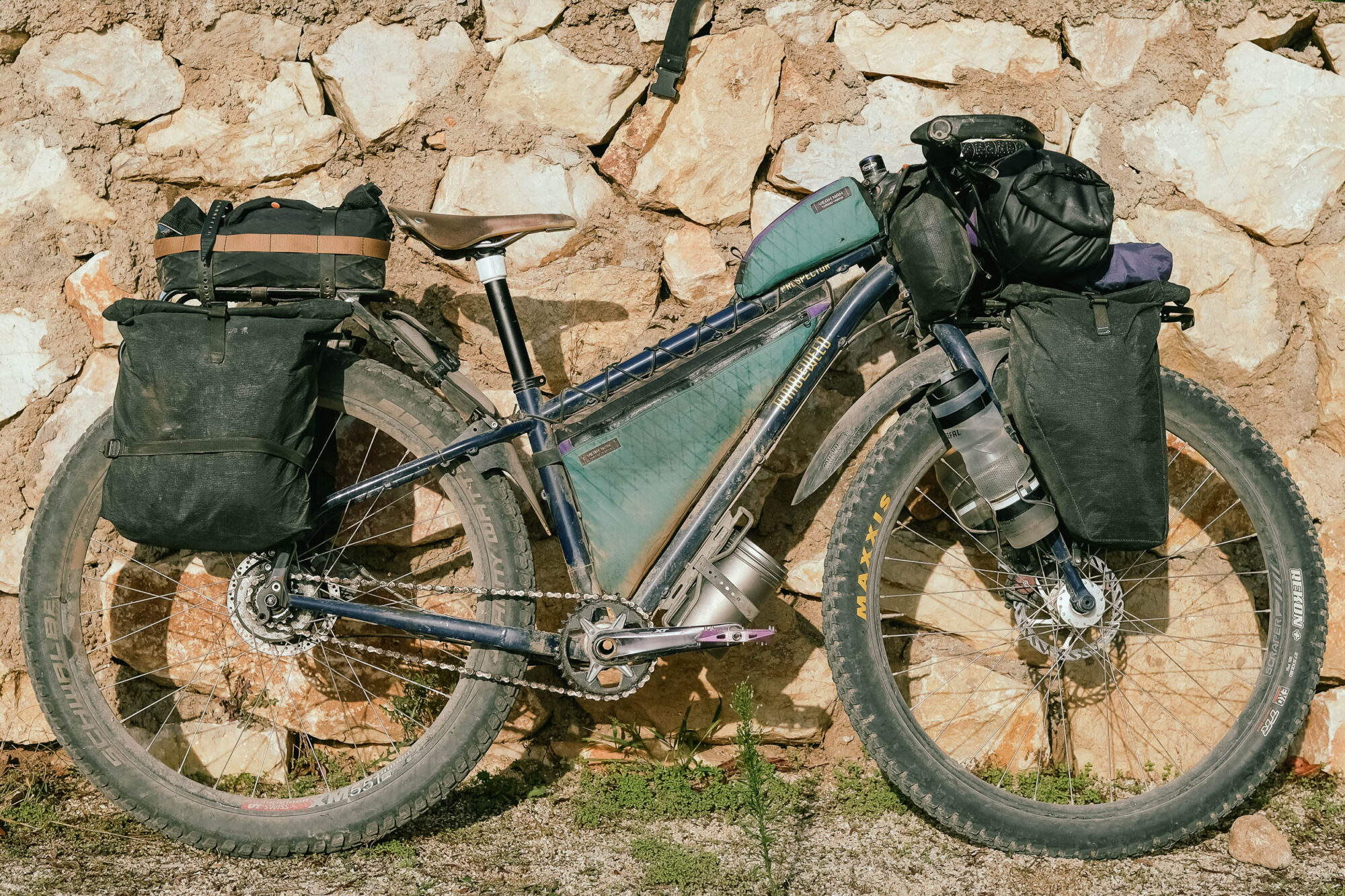
I ran SPD pedals on my around-the-world tour and carried an extra lightweight pair of shoes for off the bike. Extravagant, I know. That wasn’t an option this time around, with space and weight at a premium, and while I’ve owned plenty of good, walkable SPD shoes for bikepacking, I wouldn’t dream of living in them 24/7 for months or years. So, we’re running flat pedals. Chelsea has trail runners, and I have crossover bike/hiking shoes. Drying quickly is a bonus if you need to wear them to the pub for dinner after undertaking half a dozen water crossings that day.
Our parts selection, from cable-actuated brakes to a Rohloff drivetrain, has made for a repair-free trip with only simple maintenance, including half a dozen sets of brake pads and lubing/tensioning our chains every 2,000 kilometres. Mechanically, we are self-sufficient to the extent that we even carry a spare bottom bracket and tool.
From previous experience, a bottom bracket is not an easy-to-replace part if you’re running anything modern, so it’s a 100-gram weight penalty for significant peace of mind. Whatever perceived disadvantages Rohloff drivetrains might have (there’s that comments section minefield again), they disappear once you hit 10,000 kilometres without even noticing it’s there through mud, heavy knocks, and a million frantic gear changes.
Water falling from the sky is clean, but water being thrown up from your tyres ruins your day. Mud and grit protection are essential for us, so we run small mudguards on the front and rear, and I even sewed small sleeves that turn our rear racks struts into more substantial protection. In the theme of multi-purpose items, I modified my rack to allow the tent poles to double as a guard by sliding under the platform. The Prospector fits up to 3.8″ tyres, so there’s a low chance of getting caught up in mud before you’d be forced to stop pedalling for other reasons.
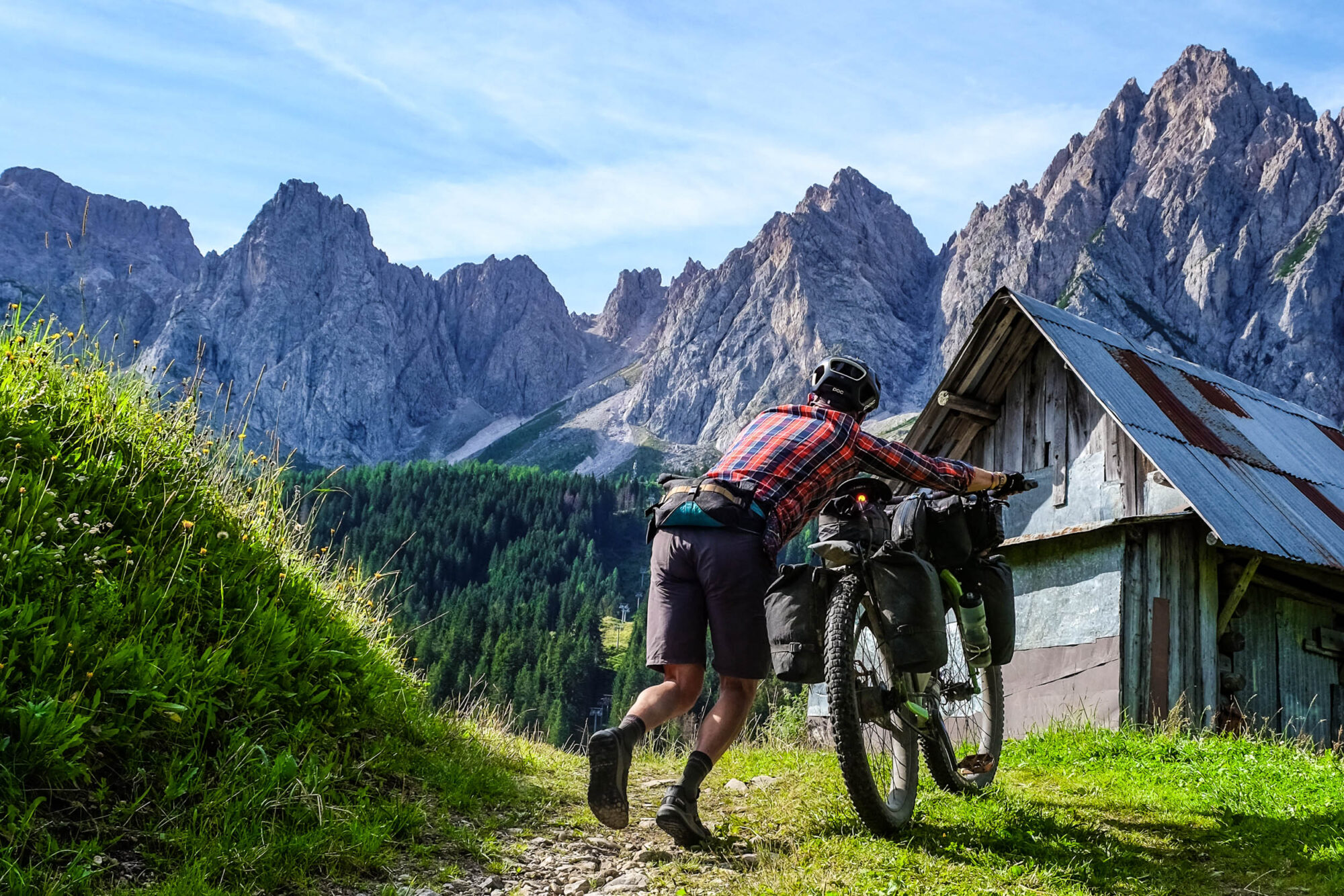
All-day lighting makes a perceivable difference while sharing roads with motorists too. I’d often hear their engine note change in the distance when we came into view as they crested that ridge line or rounded that foggy corner.
Of course, many of these characteristics could apply to shorter trips if you want to straddle the line of being overprepared, but I think that one of the real differences between a lightweight short-term bikepacking setup and the overlanding bikes you often see here on BIKEPACKING.com is the importance of bike and body lasting in the long run. By this, I mean that you can push through almost anything for a week or two, but if the reliability of your bike and body needs to span months or years, it’s a different ball game.
In a simple sense, it’s the difference between riding the 4,500-kilometre Great Divide Mountain Bike Route (GDMBR) in two weeks or doubling the distance by zig-zagging down the USA from Banff to Antelope Wells over three months. In the shorter version of the trip, you could feasibly run carbon fibre-soled clipless shoes, fit an overloaded saddle bag that sways with every pedal stroke, run fast and light tires, and carry a less-than-comfortable sleeping setup. However, compromises like that aren’t likely to be tolerable for weeks or months, and there’s a good chance things will succumb to wear and tear quickly, gradually wearing you down physically. Sure, we carried some outright luxuries, but most of our load was made up of gear selected with function over form in mind and items that would allow our minds and bodies to endure whatever was thrown at them month after month.
The route
All the work of planning, designing, building the bikes, and sewing the bags was over before we left Australia. However, when it came to the bigger plan, our route, we decided to pick a start point (Scotland) and an endpoint (Türkiye), then plan on the go.
You could plan your entire route, but if the last seven months are anything to go by, it won’t survive floods, fires, storms, heat waves, COVID-19, and the indirect effects of war, riots, and other regional instabilities. Not to mention the places you’d want to avoid during peak tourist season, visa issues, and, last but not least, a plain ol’ change of mind.

On top of possible alterations to your route, without being local, there’s no way to know if a dirt backroad or trail is rideable or even open to the public. This is in contrast to touring by road, where any yellow line on a map is fair game, save for road works or landslides.
So, instead of detailed planning, I jumped onto the BIKEPACKING.com routes page, downloaded almost every single route between the UK and Türkiye, and dropped them into the same app so that I could see them all at once. Over the years, this site has also made me aware of events throughout the regions we’d be riding through, so I sourced their routes via searches or through my network of friends. Six degrees of separation meant we found what we needed. Then we landed in Edinburgh, Scotland.
By chance, weeks earlier, the Pictish Trail route had just been published on this site. We latched onto it quickly as it gave us the perfect exit from the city and then a rough route north. Of course, any trip to Scotland would be half-hearted if it missed the Cairngorms, so as the Pictish Trail passed the southeastern border, we diverted onto the Cairngorms Loop and the Deeside Trail routes.
We then entered touring bike mode, and with part of the magnificent National Cycle Route 7, we were able to rejoin the Pictish Trail without backtracking, with the bonus of a well-deserved day of rest in a big town, Inverness, avoiding some rain.
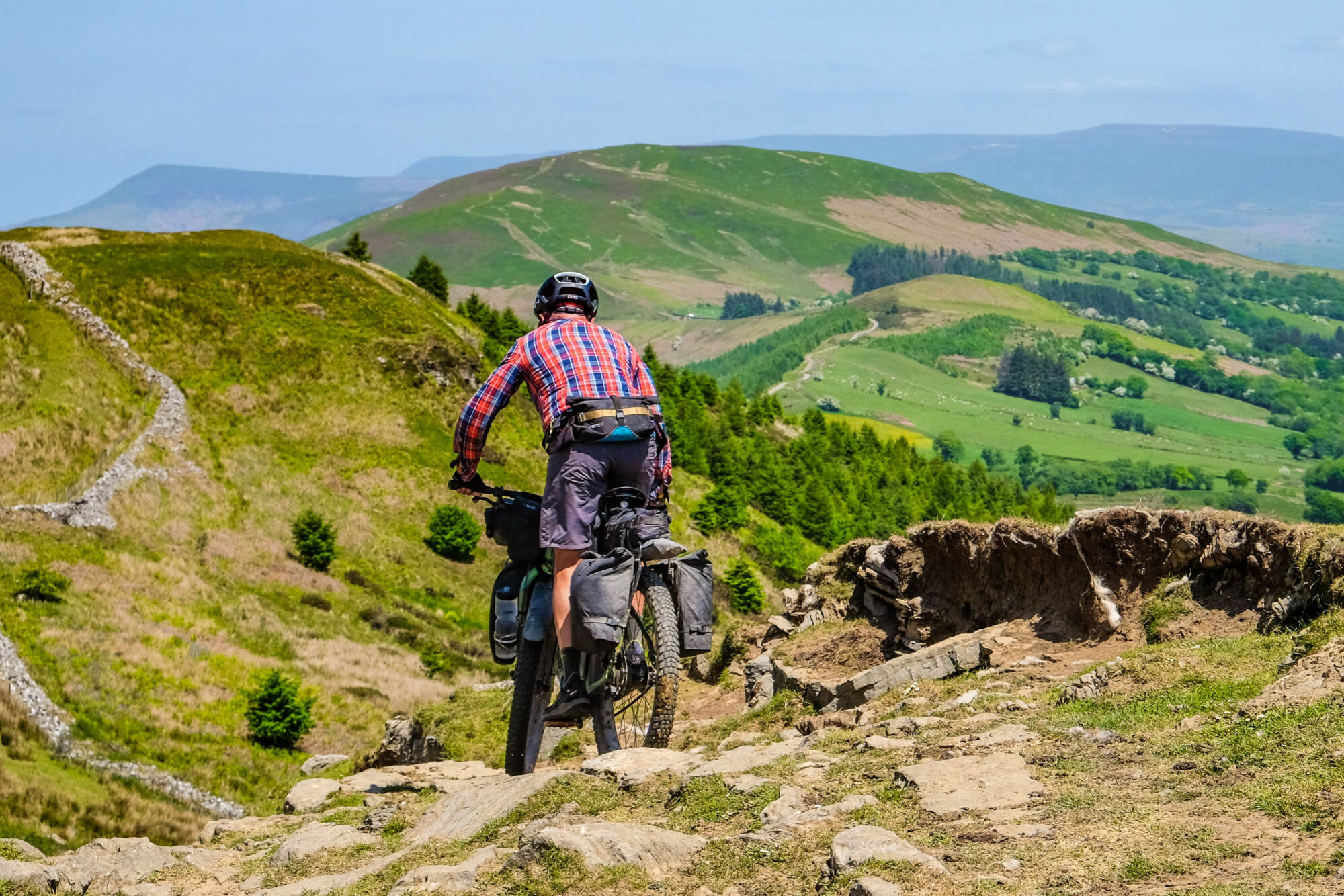
By this time, we were becoming old hands at route-finding in Scotland. However, we were yet to learn exactly what makes Scotland a bikepacking utopia. A “public right of way” is a right of passage between two places the public habitually goes—a defined route often over private property. This, coupled with the Scottish Outdoor Access Code, means everyone has the right to access Scotland’s outdoor spaces like hills, beaches, rivers, moorlands, forests, and lochs, as long as they do so responsibly. When we got our hands on a GPX of all the bothies in the UK, our creative juices went wild, and our overlanding route left the established ways.
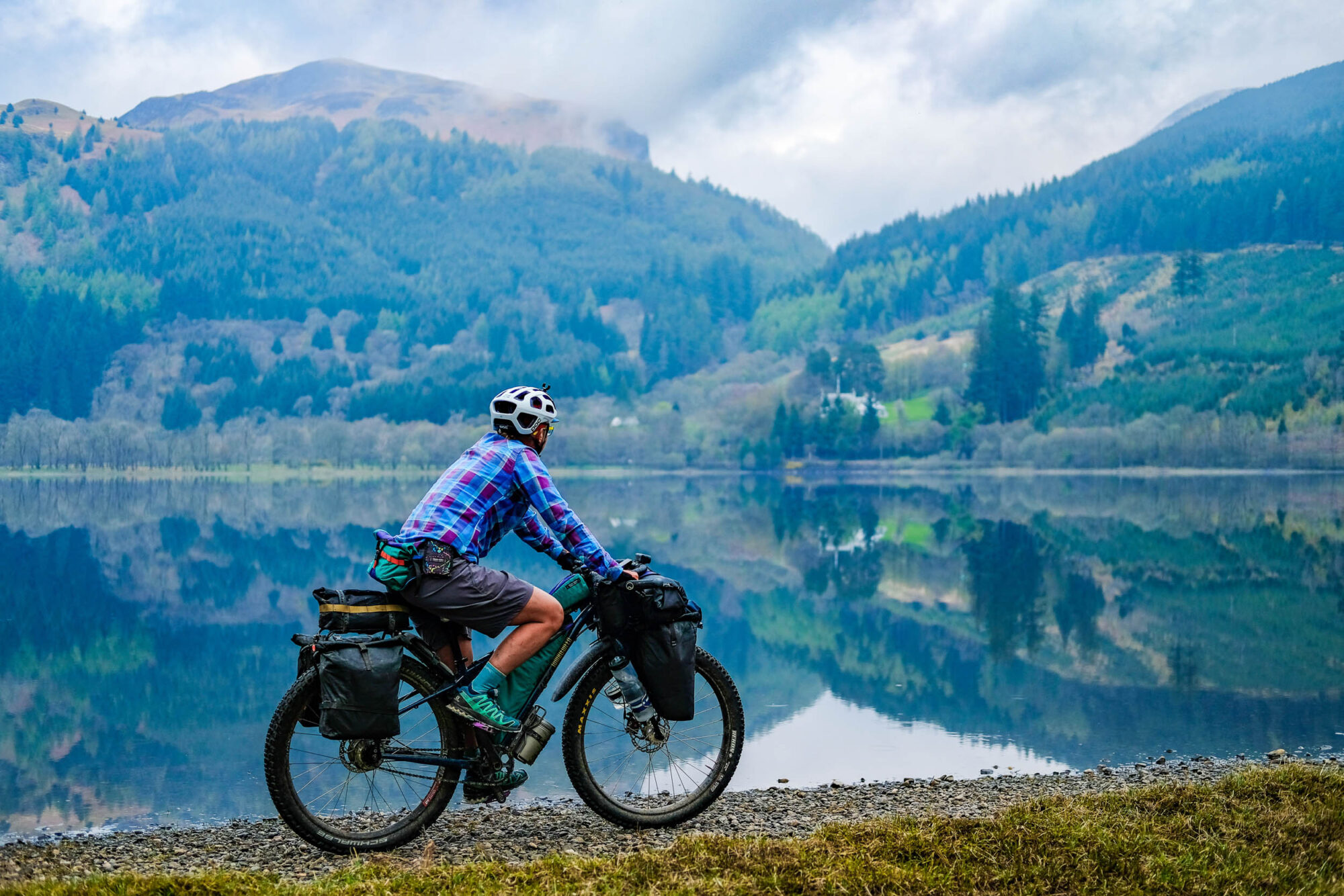
You get the idea. It took us a while to adapt to the unique characteristics of route-finding even in the relatively developed landscape of Scotland, and this process of adaptation occurred time and time again on our way to Türkiye, not only at official borders but crossing from one region to the next within the same country.
Because our route saw us venture as far as possible north—to the Orkney Islands and then back south toward our ferry at the bottom of England—we continued to adapt to the nuances of the culture and landscape. We followed dirt sections of Sustrans and National Cycling Routes that sometimes saw us pushing our bikes up loose trails, learned about the 3,000 kilometres of canal paths that criss-cross the island and provide quiet and mostly smooth singletrack, and slowly learned that bridleways, open to cycling, aren’t necessarily good for cycling. One local even greeted us at a pass in the Lake District, saying, “I wouldn’t take a horse up that bridle trail!”
A lot of the time, we were spoiled for choice. The UK spans a narrow Island, so at one stage, we overlapped five different published routes. By the time we reached Portsmouth, we had followed sections of more than 15 published routes, a majority listed on BIKEPACKING.com.
Our diagonal crossing of France saw 1,750 kilometres of astonishingly good bikepacking, easy camping, amazing food, and 23 unique French beers. It was the quality of the riding that was the most surprising (besides the beer), considering we knew the first half of our journey across the country would be through the flatter agricultural lands of Brittany and the Loire Valley before we hit the excitement of the Central Massif. Luckily, we soon discovered that we could utilise the pink hiking trails on my map to cross the northeast of the country. They were all completely rideable ancient doubletrack trails, mostly hidden in the trees between fields.
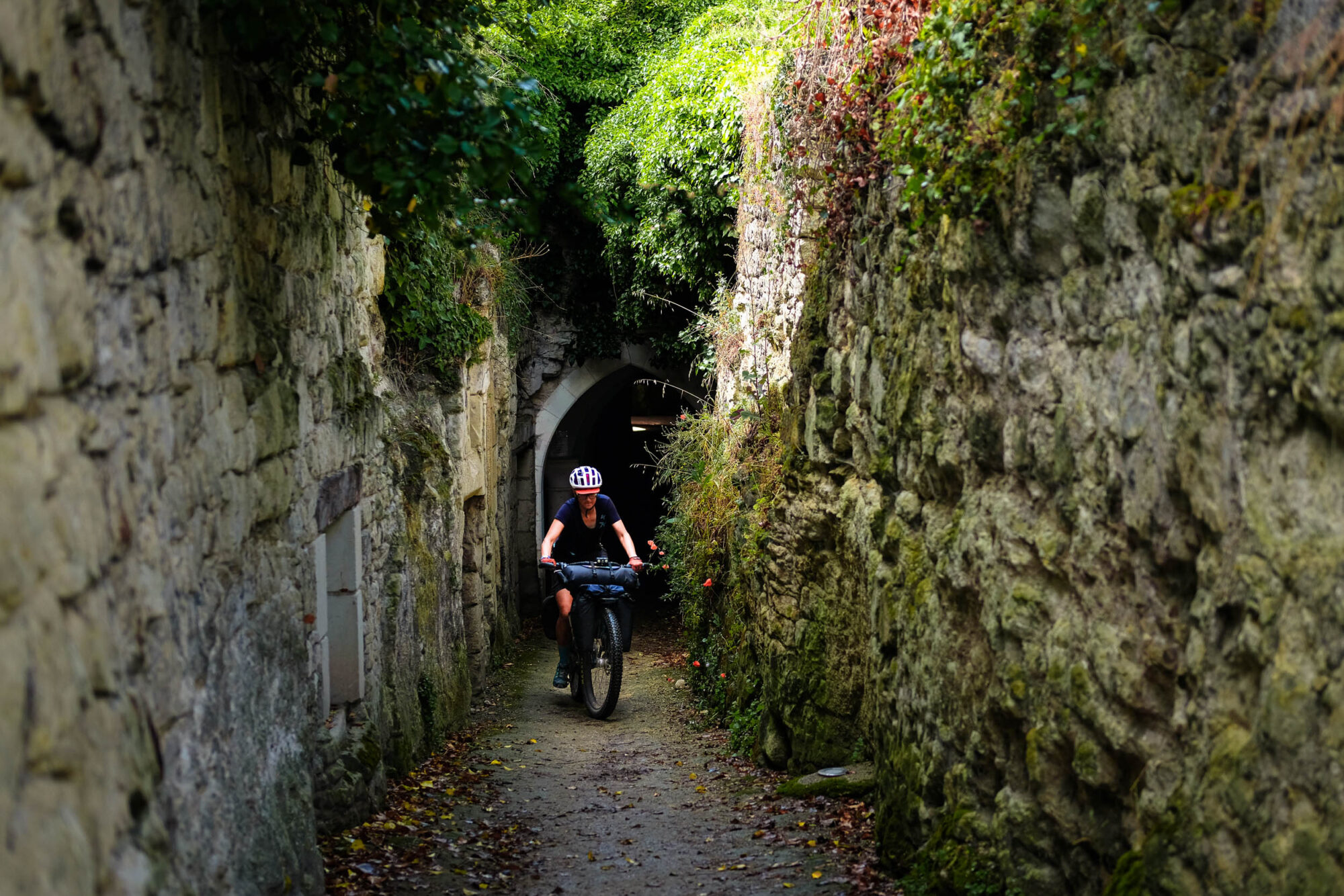
We adapted to the fact that most shops are shut from roughly 12 to 3 p.m. daily, and, more importantly, they’re often shut on Sundays and Mondays. These little surprises can be quite impactful to your route selection if you are actively staying away from cities and large towns as we were.
Soon enough, we reached the Grand Traversée Du Massif Central and the Ardeche-Cevennes Divide routes, and I could once again relax, following thousands of small trail markers and a GPX route. We ventured into the Alps on a whim after we decided France and its routes were so much fun. The original idea was north through Germany, but you get the picture by now: there was no real plan.

After hearing so many glowing reports, the Torino-Nice Rally route was the real carrot for us. Flying to Italy and doing this route alone would be a challenge, but completing it in the middle of a 10,000-kilometre journey made it the most comprehensive test for our overlanding bikes. It comprises a mixture of loose and sometimes technical trials, endless steep climbs, and fast sealed and unsealed descents. It’s relentless, day after day.
We learned to plan ahead and not underestimate our need for rest every few days, as there’s no such thing as a rolling rest day in the Alps, especially when you often need to carry more supplies than usual. Our expected progress slowed compared to what we were accustomed to. Luckily, we had no flights to catch.
The cost of living in Switzerland makes keeping to a long-term travel budget a challenge, coupled with the fact that wild camping below the tree line is illegal. It took some creativity, speed, and dependence on Warmshowers hosts to get through unscathed.
Peak tourist season saw the Italian Dolomites as a region we couldn’t get through fast enough for our liking. Luckily, you can scoot through on a long ribbon of bike path with the occasional dirt detour to maintain your sanity. It’s not really our style, but after 13 consecutive passes in the weeks prior, we weren’t short on mountain views in our memory banks.
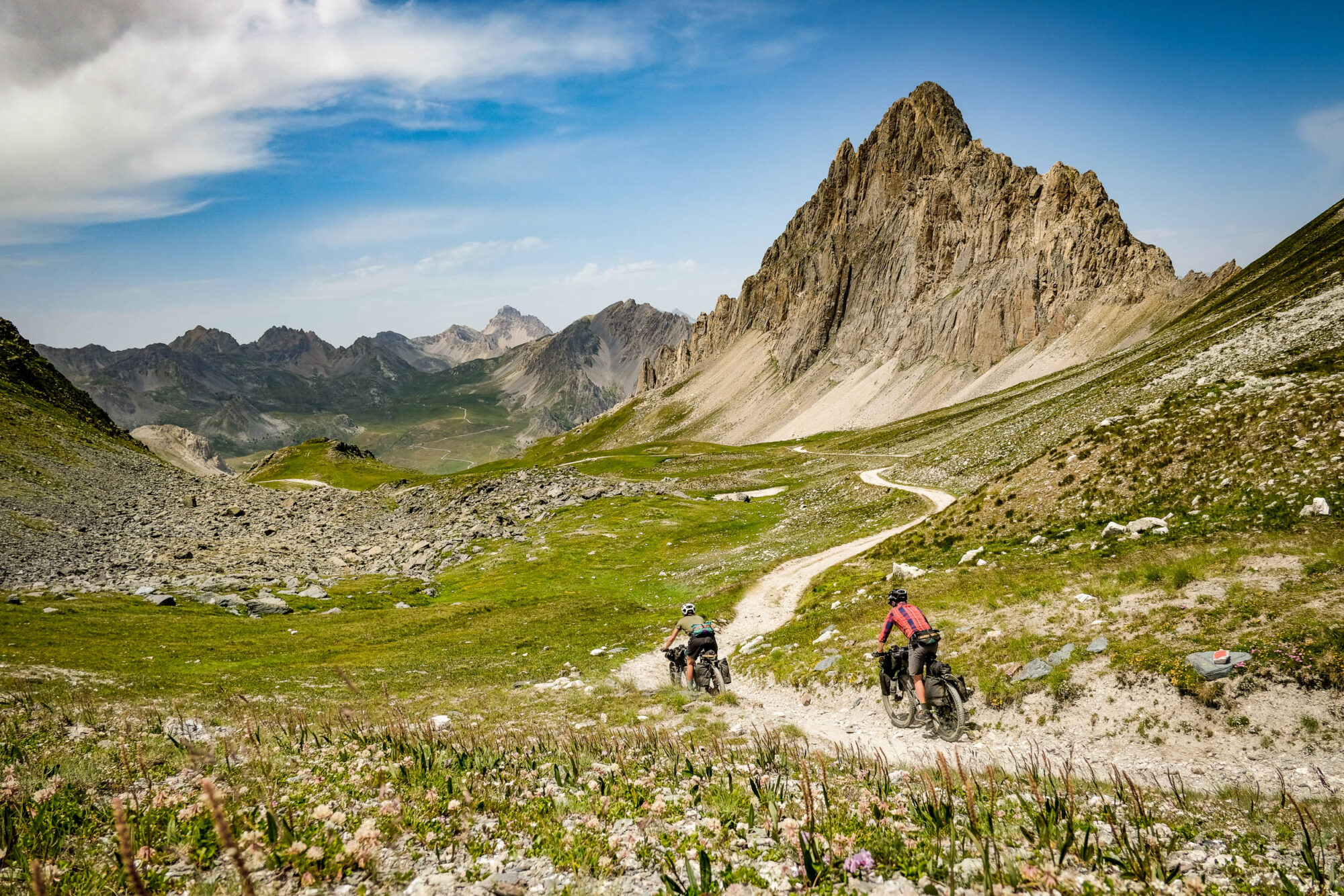
Mapping in the Balkans (especially in Bosnia) was often lacking. Road surfaces were often incorrect (or aspirational), roads were often not shown at all, and resupply opportunities weren’t listed online. For this reason, the existence of the Slovenian West Loop, Trans Balkan Race route and, most importantly, the Bosnian Highline were huge bonuses.
Our plan was to follow much of the West Slovenia Loop and add some of the Adriatic Crest route after that, but the impacts of climate change quickly put a halt to those plans. Extreme flooding had closed much of the route in Slovenia, and soon after, a second heat wave hit the Balkans, where remaining inland and at altitude was our only option for cool daytime temperatures and comfortable sleeping, so we avoided the hot and humid low-lying coastal areas and missed out on the Adriatic Crest.
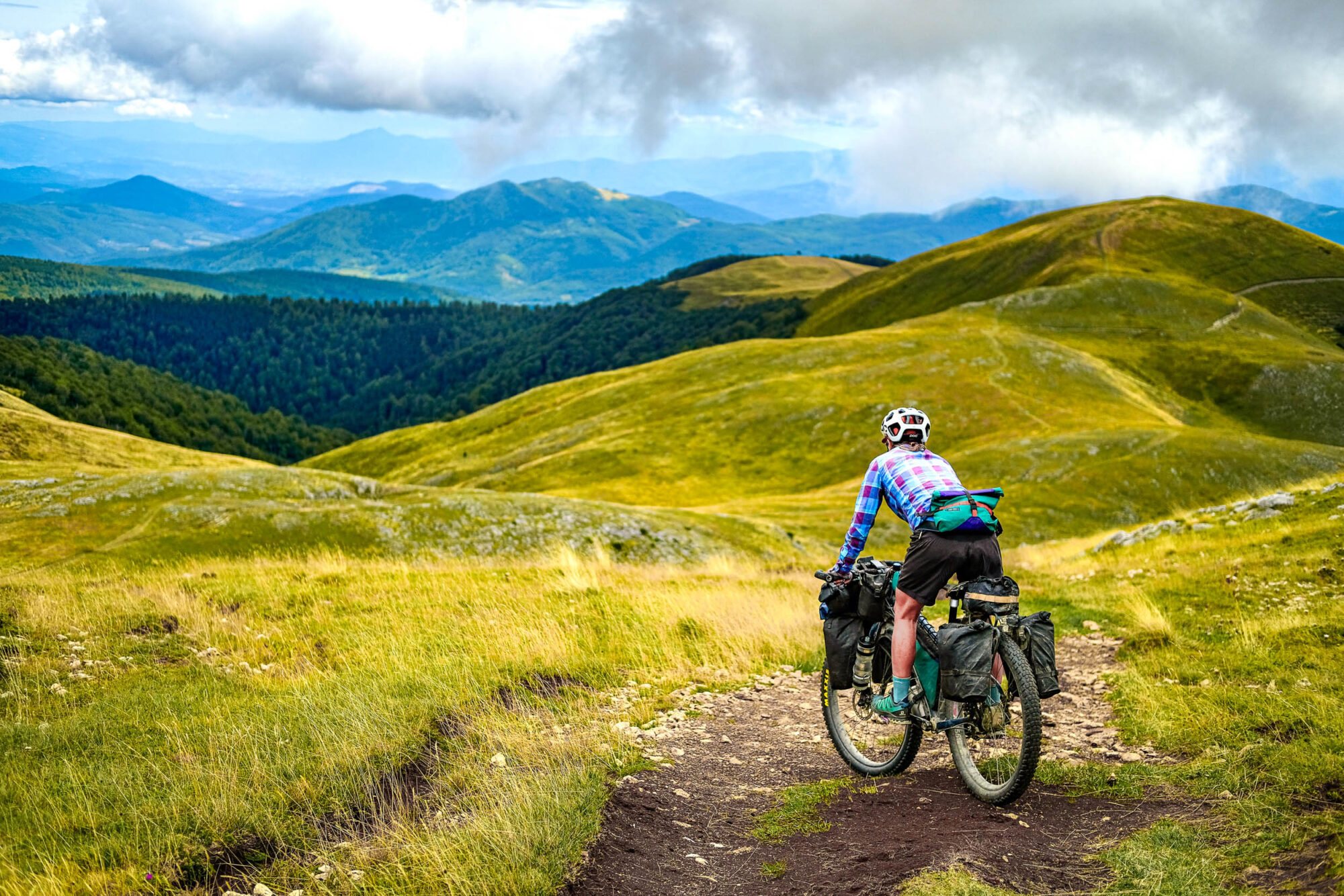
Wild camping in Bosnia was the easiest of any region so far, with quiet wooded areas everywhere. If I hadn’t sourced the Highline route from this site and read the detailed trail report, the sight of landmine markers would have been quite a surprise. Luckily, we were primed for the danger and ensured we had appropriate mapping to keep us safe, as the red markers were often overgrown.
Your health is something constantly on your mind whilst riding, no matter how healthy you are at that specific point in time. So, when my undiagnosed heart issues started playing up as we headed toward Albania from Montenegro, it made the decision to ferry from Croatia to Greece—and comparatively better health care if needed—an easy one. Our three-month time limit in the Schengen Zone was also nearly up, another way of taking the decision out of our hands.
Island hopping across Greece to avoid heavy fines for overstaying in the Schengen Zone was an exercise in patience, planning, and high spending, but the lack of long days on the bikes made it feel like a holiday from a holiday.
I’d heard of the Lycian Way Hiking route, and when I found out you could follow the gist of it by bike, I was excited. We fought our way along the south coast of Türkiye, always in view of the narrow and rocky hiking trail, constantly amazed at what we saw.
I began to call route planning in Türkiye “satellite planning.” Mapping was the worst we had experienced on the trip, so satellite imagery was a must if we wanted to know whether or not civilisation existed where there was a place name on our map. Back streets and buildings just weren’t shown. Roads were also not in accordance with colour codes on the map, and they seemed interchangeable and inconsistent. Luckily, with the advent of eSims, it has become easy to jump from county to country and maintain cellular data on the move. So, as we planned the next day of riding in our sleeping bags at night, we zoomed in on that imagery.
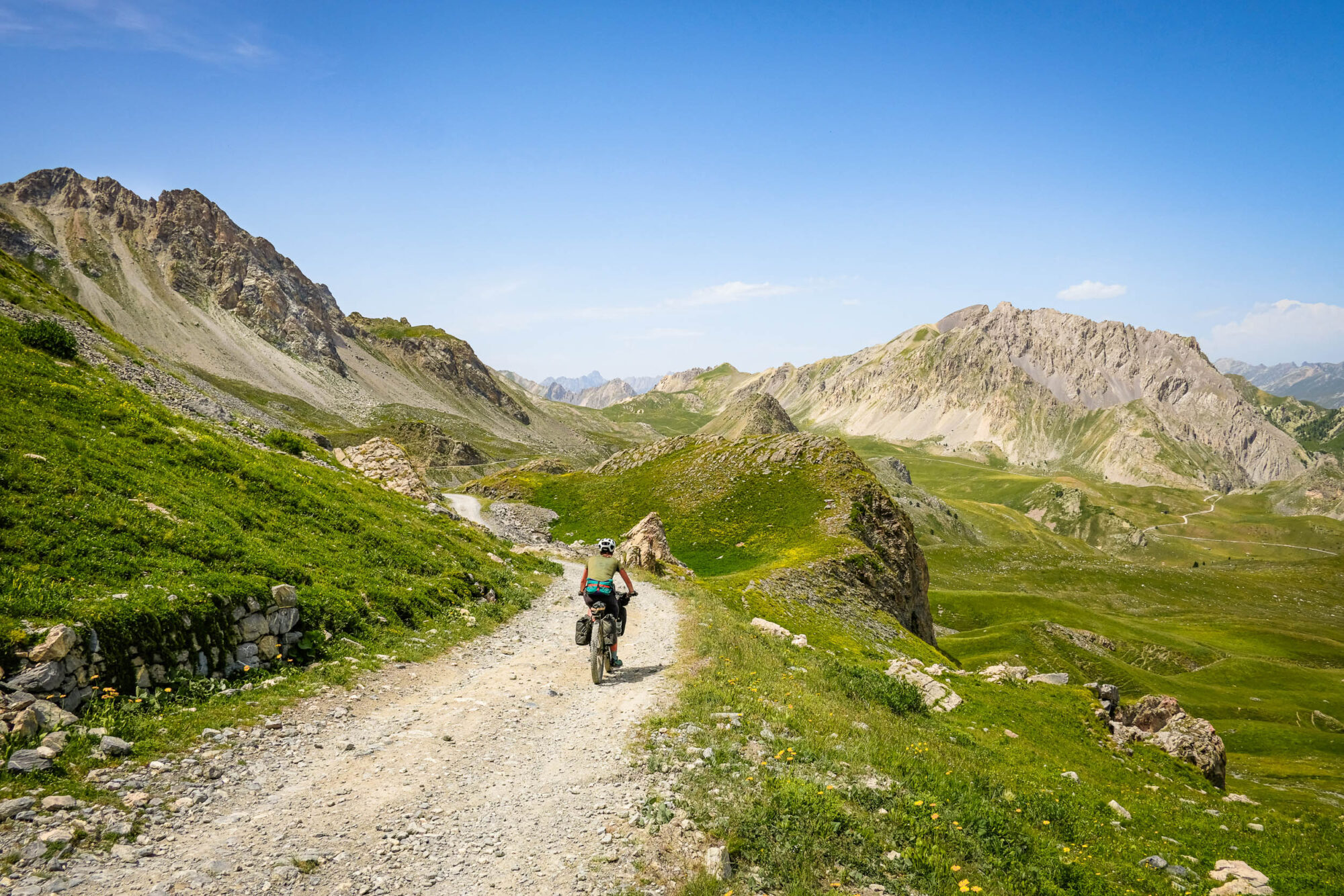
As much as I am meticulous about checking my bike for loose bolts or worn components, I hadn’t envisaged cracking a rim (or was I foolishly optimistic?). The wheelset had done well over 10,000 kilometers of loaded bikepacking before this trip, so I never brushed that layer of dried mud and dust away to check. At a snack stop, I noticed something odd and discovered eight cracked eyelets in my rear rim. Enter the final unexpected change to our plans.
We weren’t stopping to get the rim changed. With “only” 700 kilometres of the journey to go, I was going to baby this wheel across the finish line. As luck would have it, our rough route from Antalya to Istanbul didn’t allow for much creativity concerning trail riding anyway. In the south, the mountains emerge so abruptly out of the earth that, more often than not, there is only the highway and one other sealed road to choose from, with the occasional idyllic farm track on the lowlands. This meant little risk of rocky trails worsening or completely destroying my rear wheel. Let’s just say that the 15% incline street that led to our accommodation in Istanbul was the perfect end to our journey.
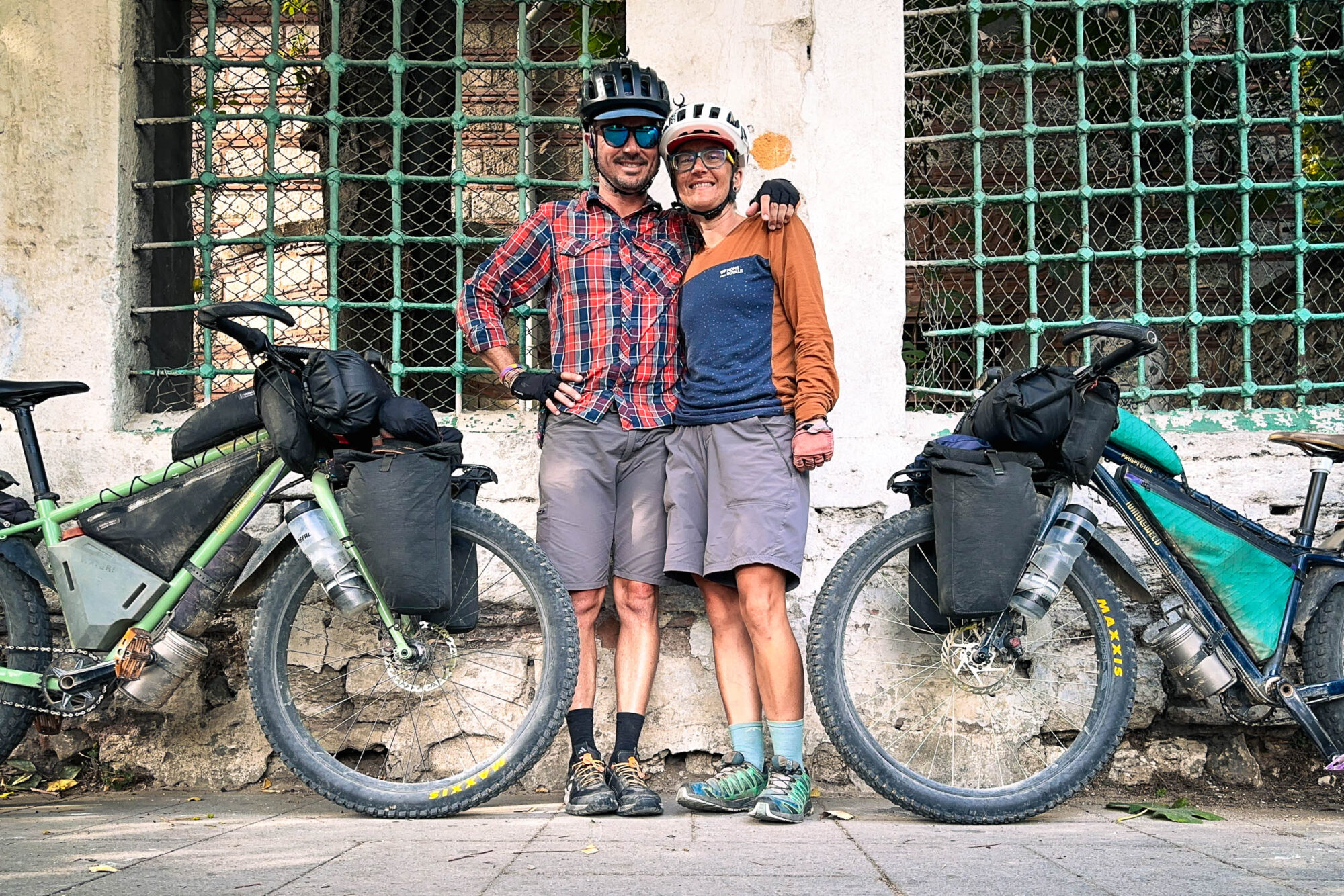
In Summary
Once you’ve travelled overland by bicycle, without time restrictions, you are forever spoiled. Every short trip you take from that moment onward comes with the stress of meeting flight deadlines, having to endure bad weather rather than take a rest day, and the requirement to re-enter working life at some point.
The freedom afforded by hitting the road or trail without commitment to a greater detailed plan is something few are fortunate enough to experience, and we are in a time of abundance when it comes to resources that allow us to travel by the seat of our pants. BIKEPACKING.com was, without a doubt, the single most valuable of resources when it came to us pulling off another trip of a lifetime, and we’re glad to be able to give a little something back with this story.
Further Reading
Make sure to dig into these related articles for more info...
Please keep the conversation civil, constructive, and inclusive, or your comment will be removed.






